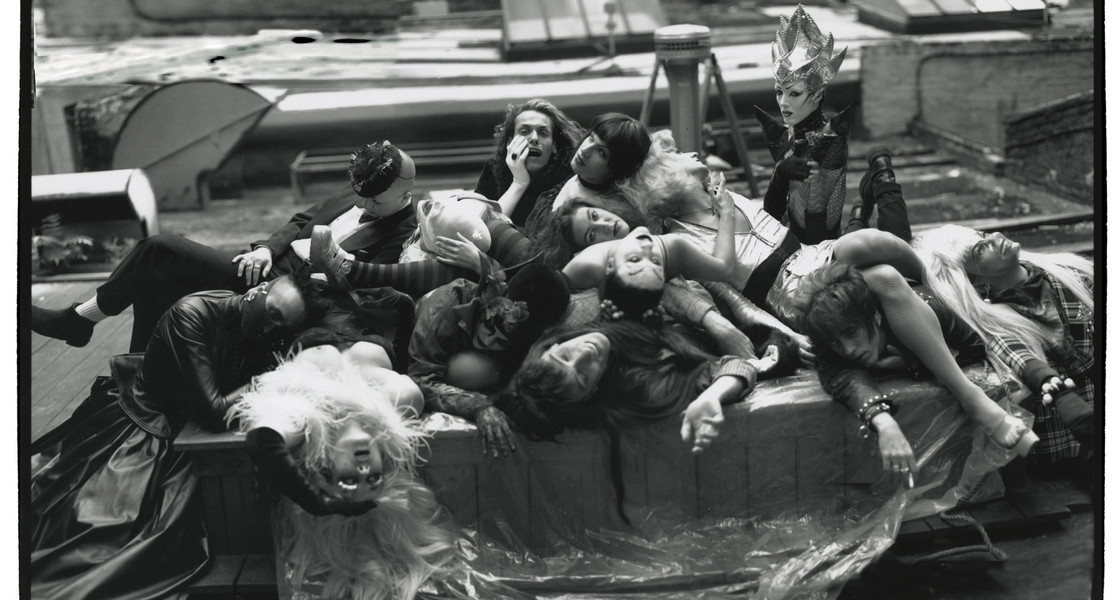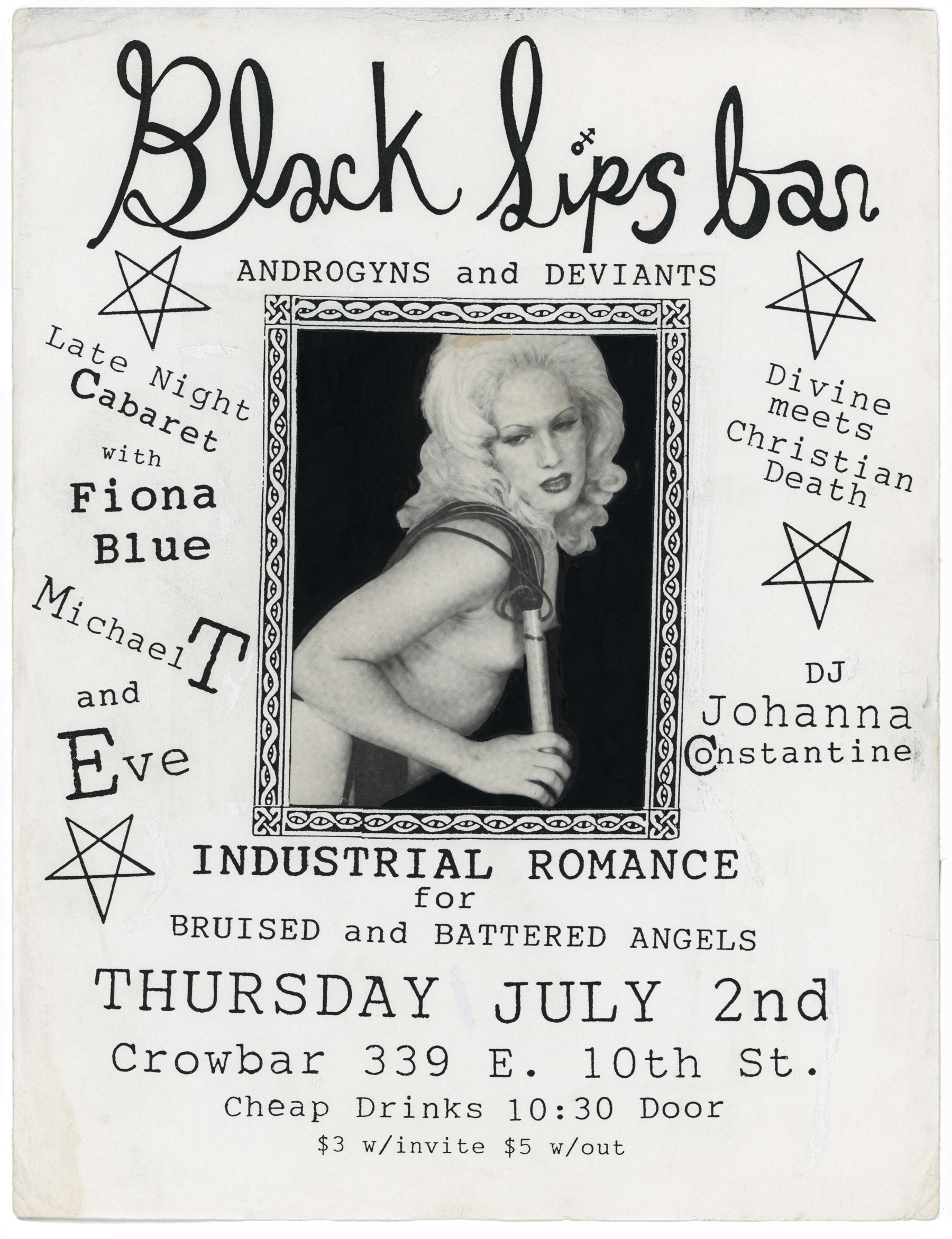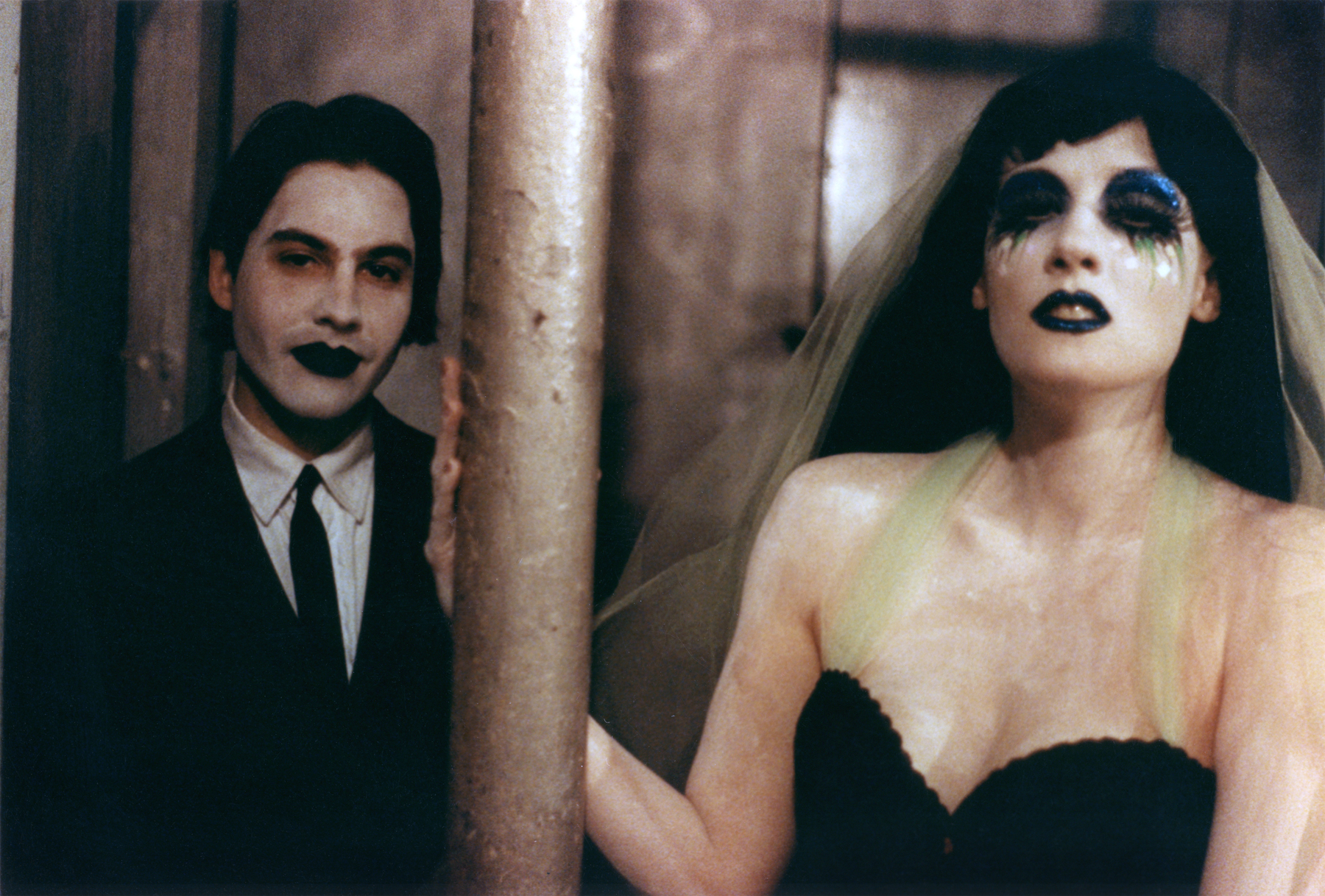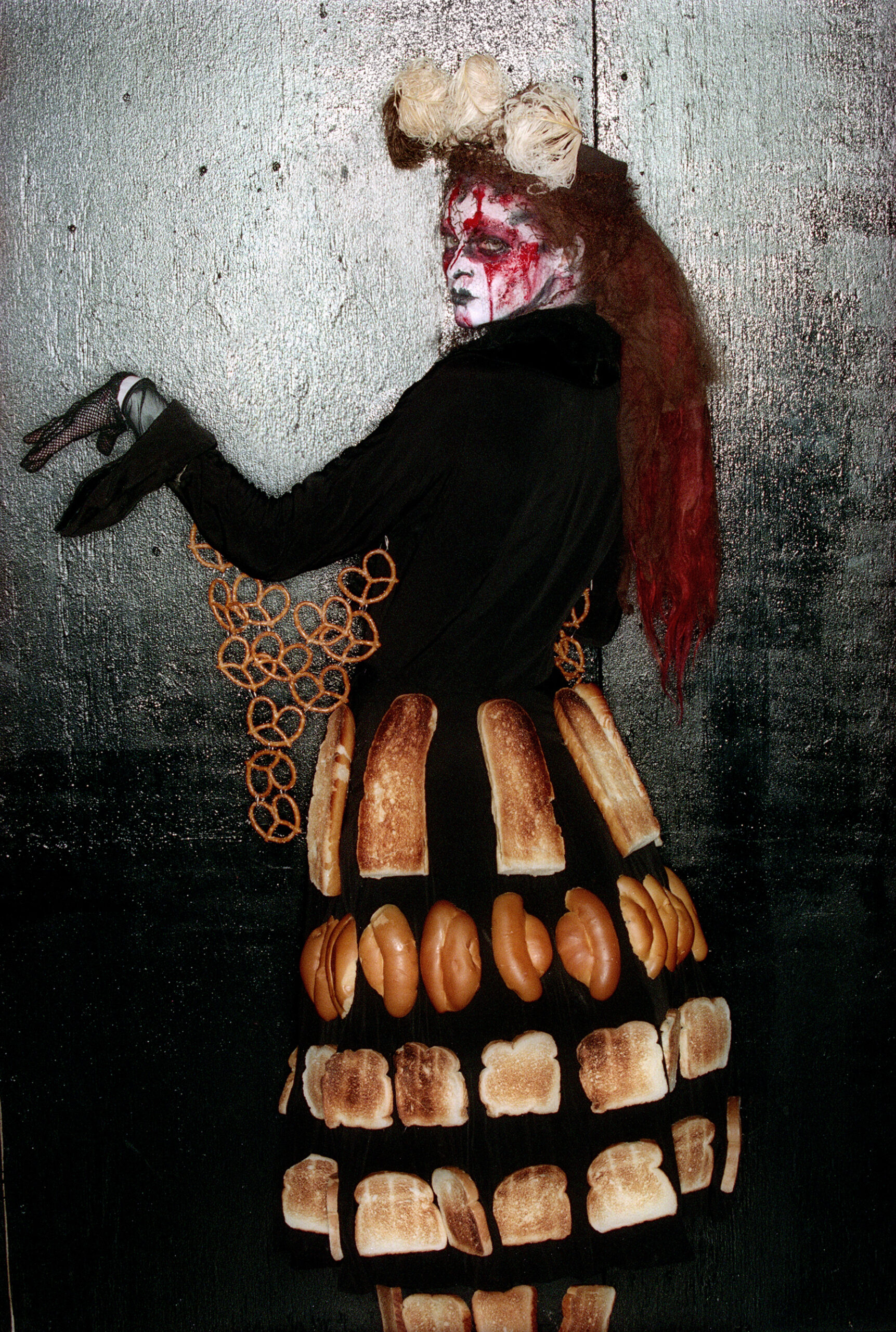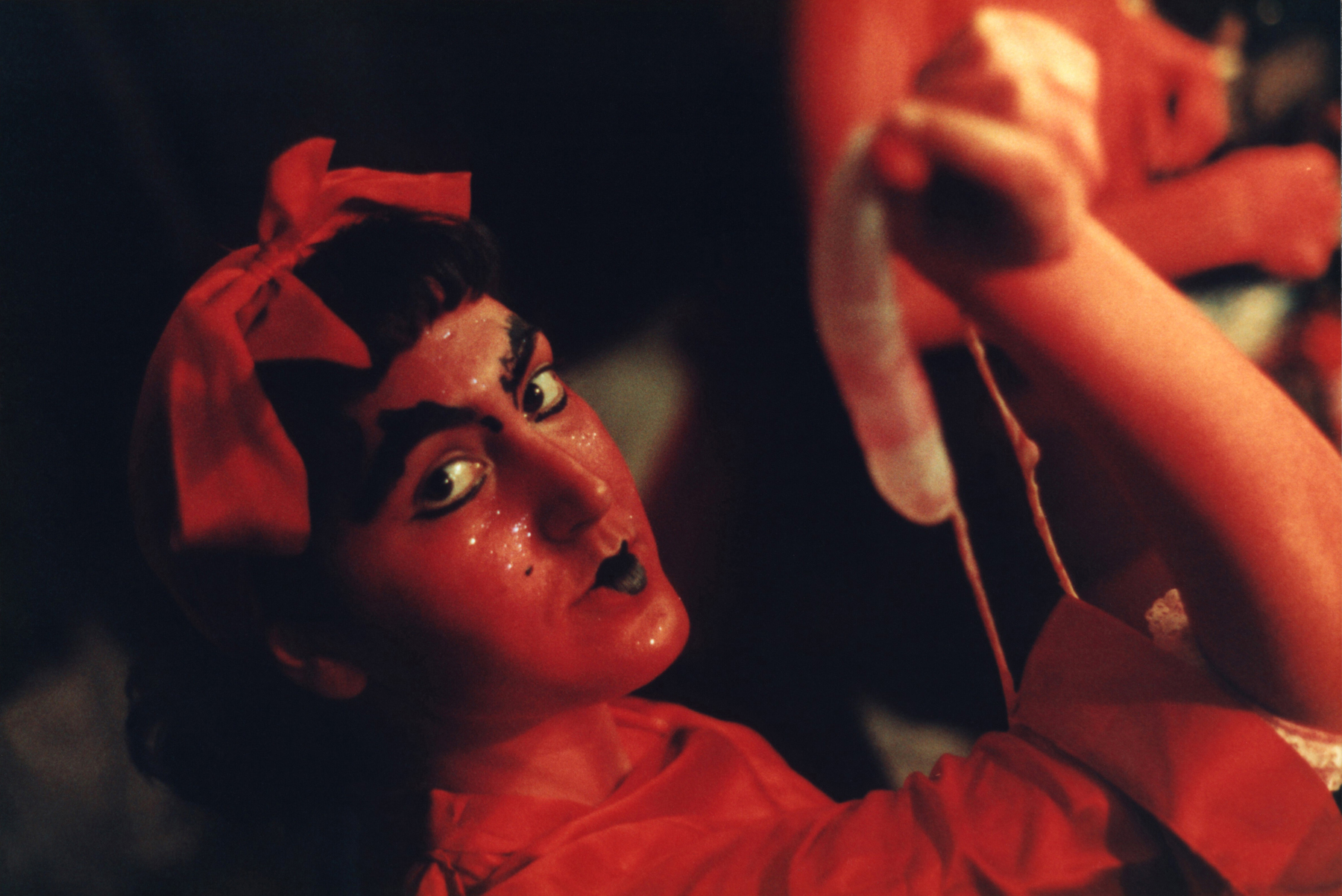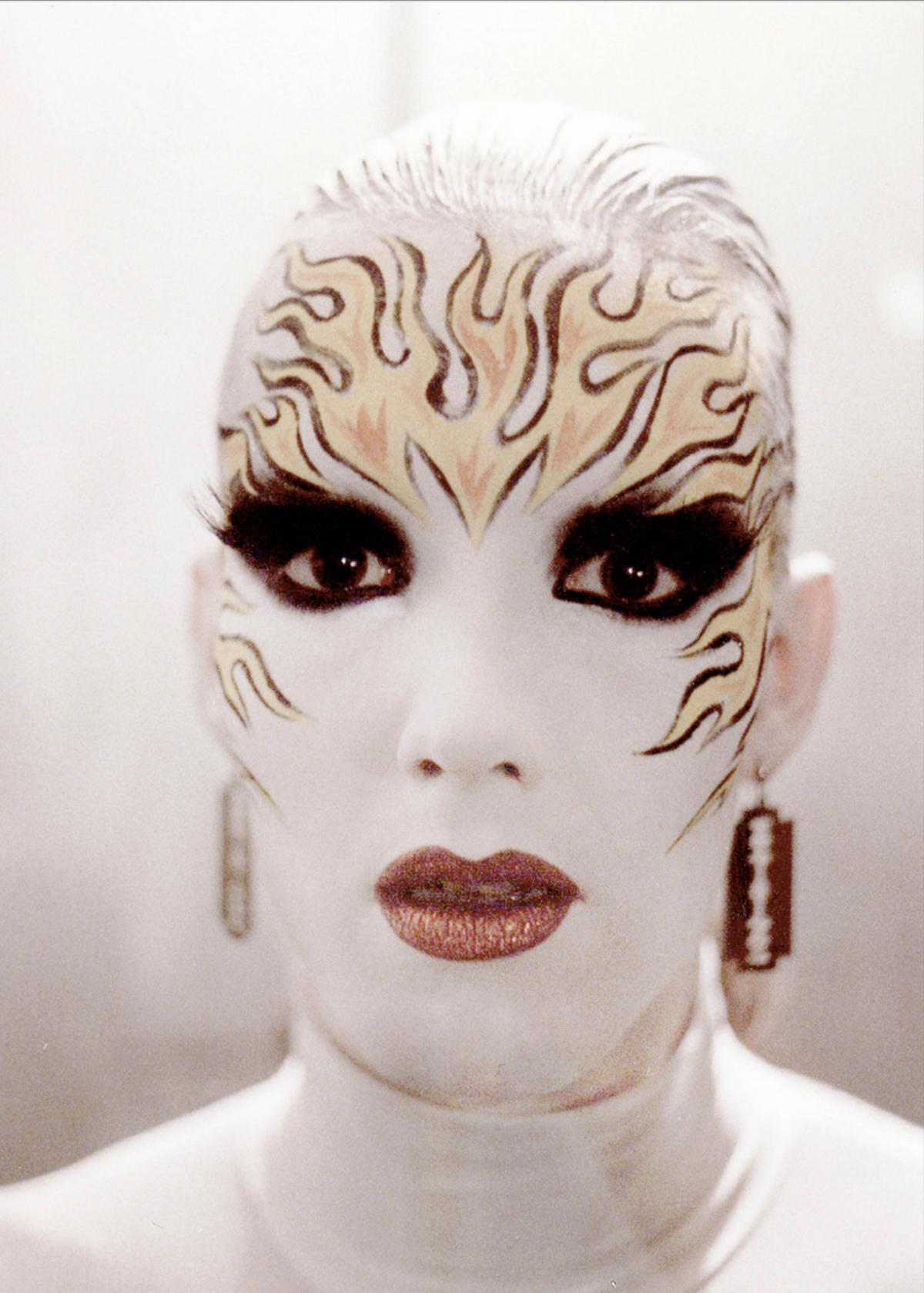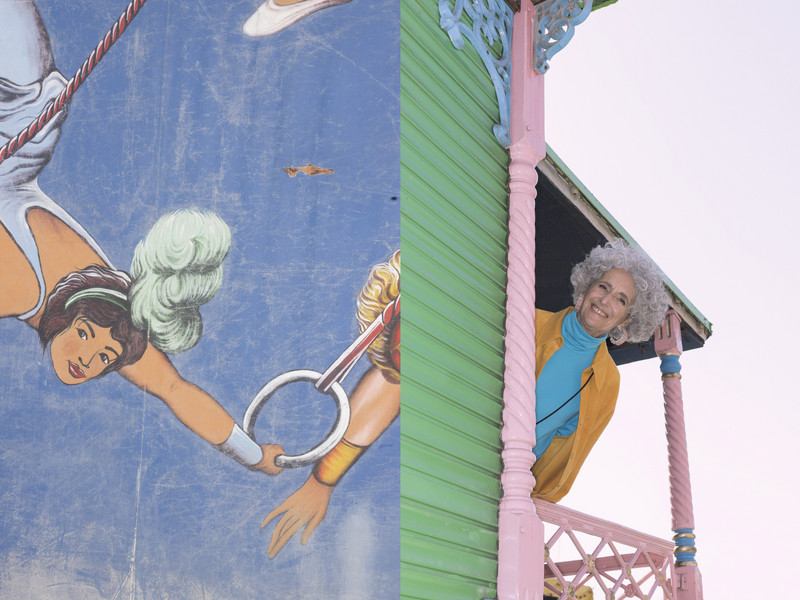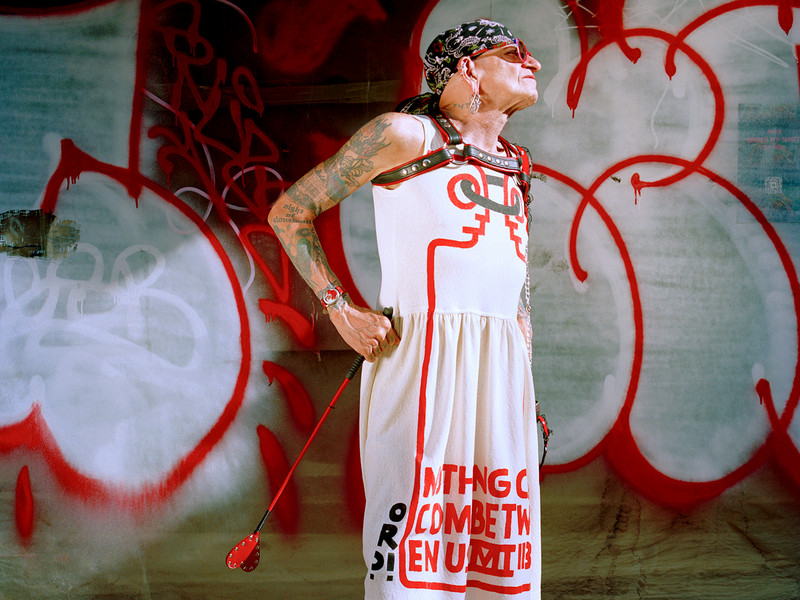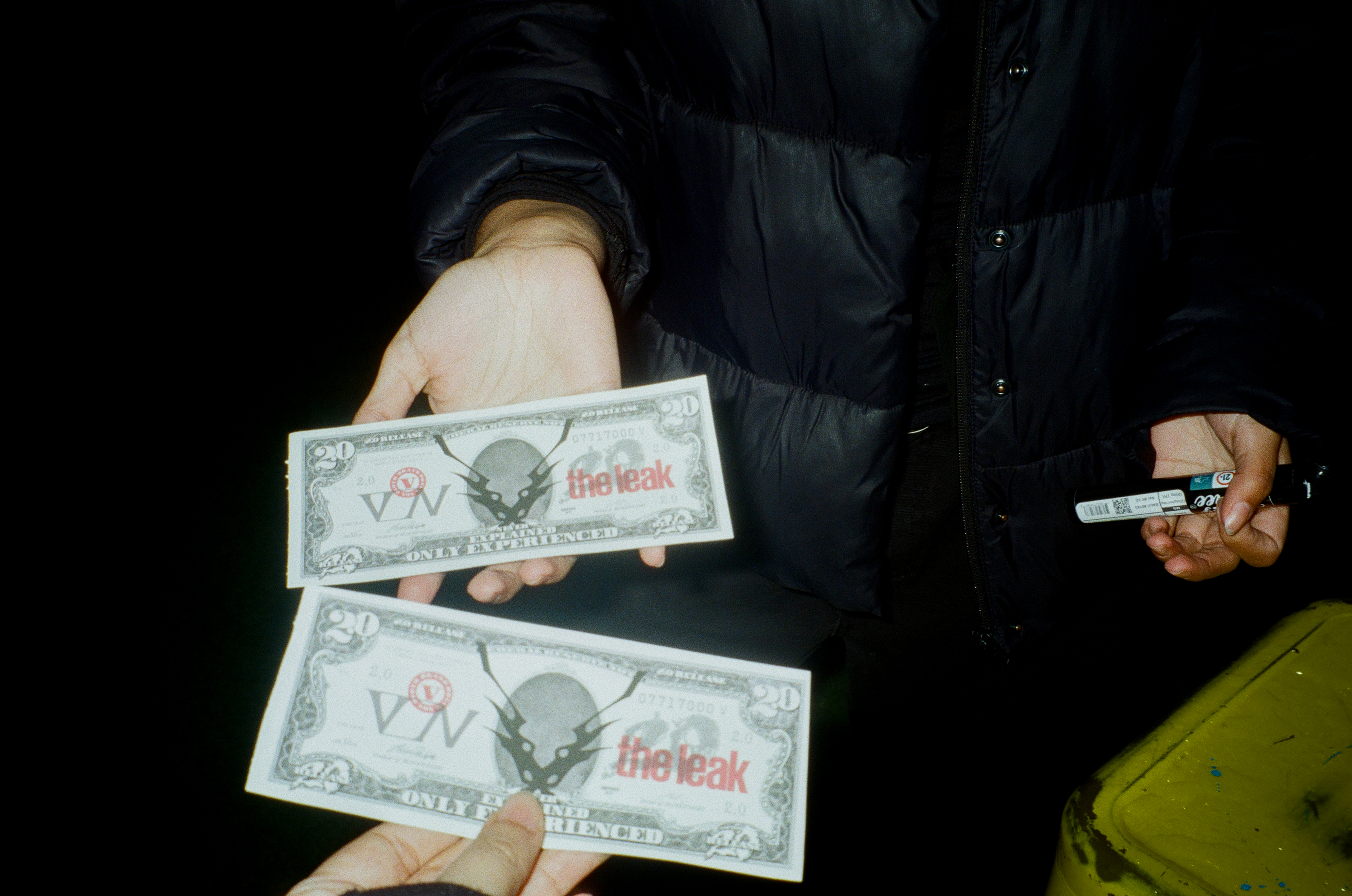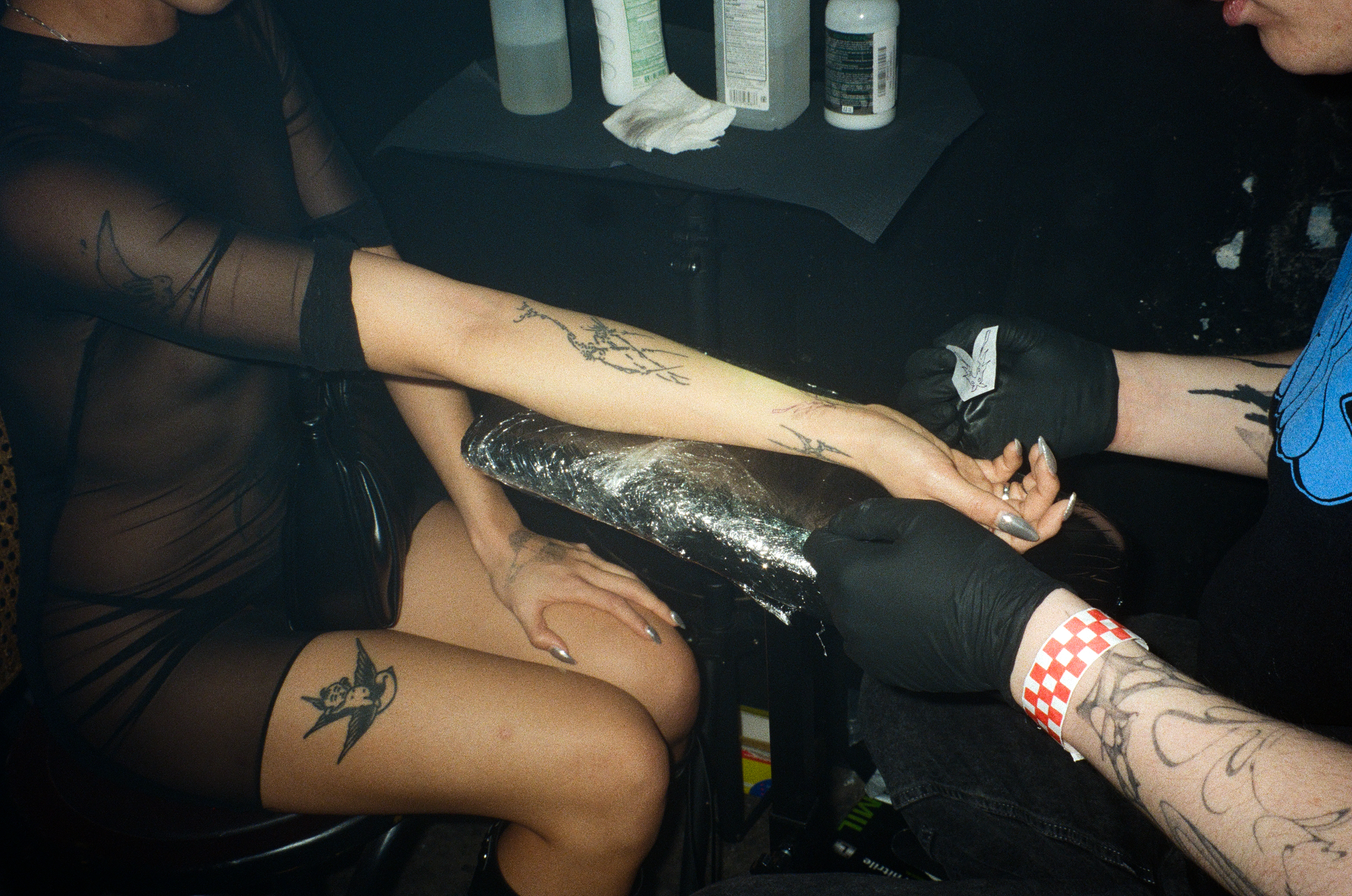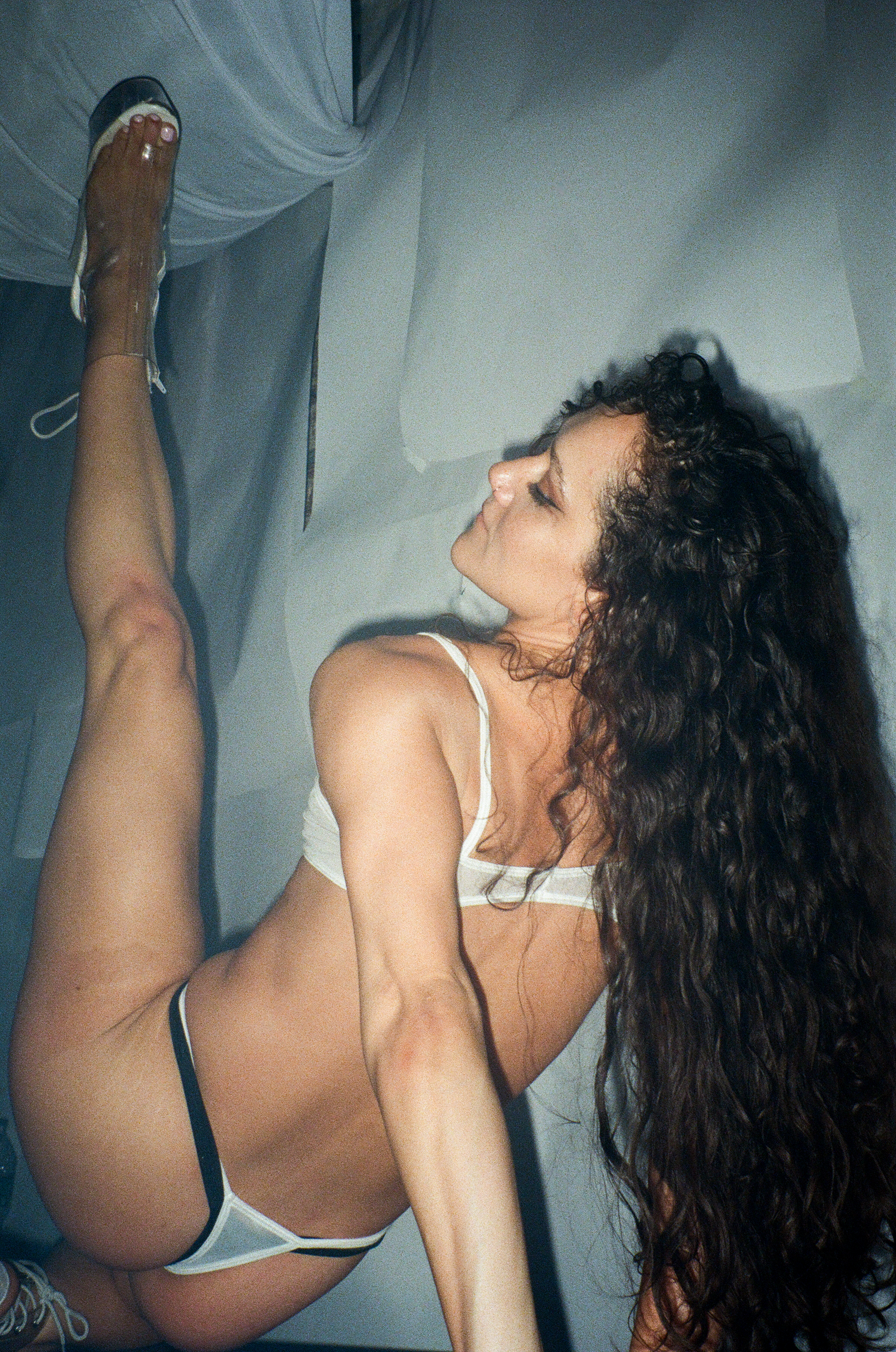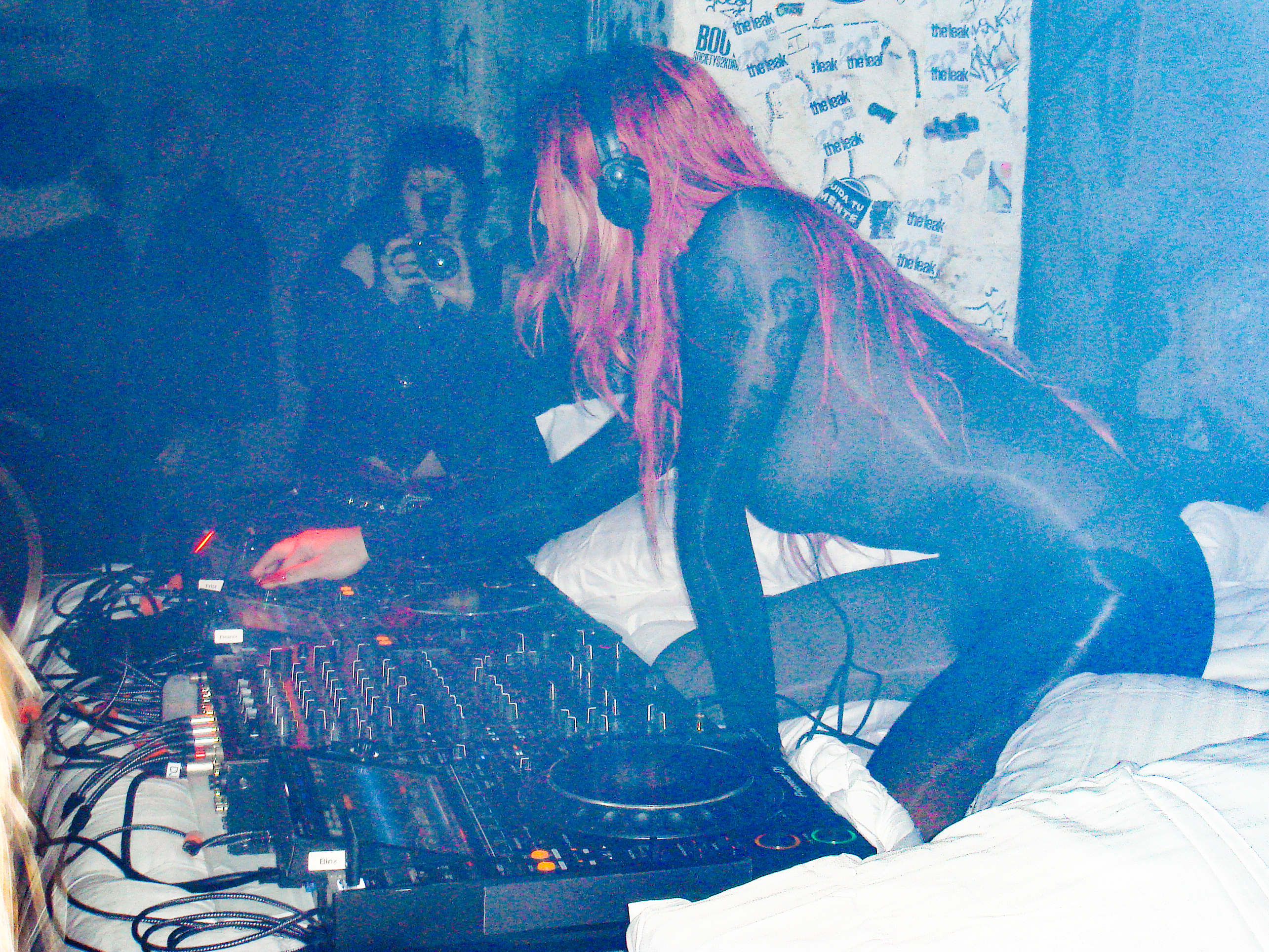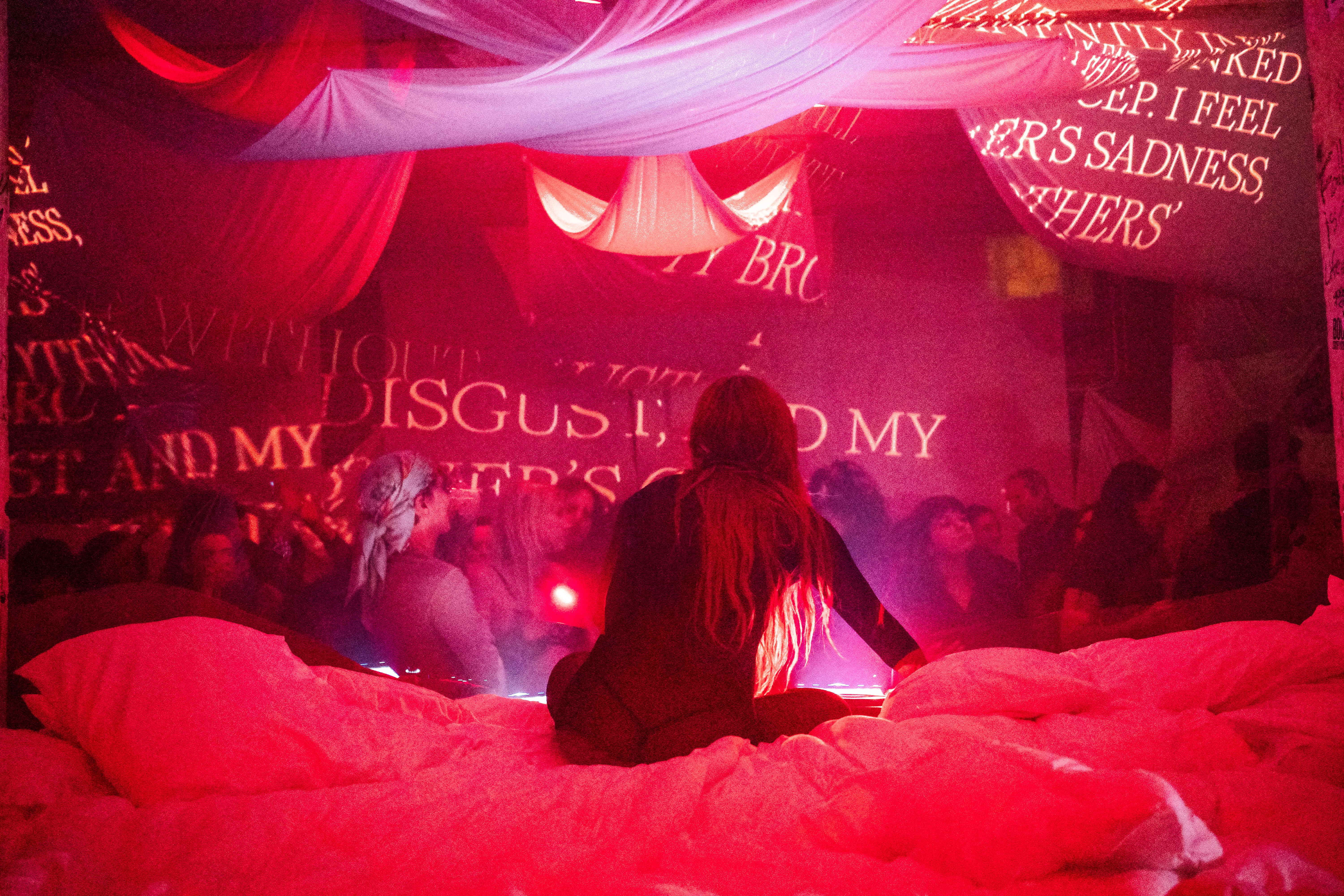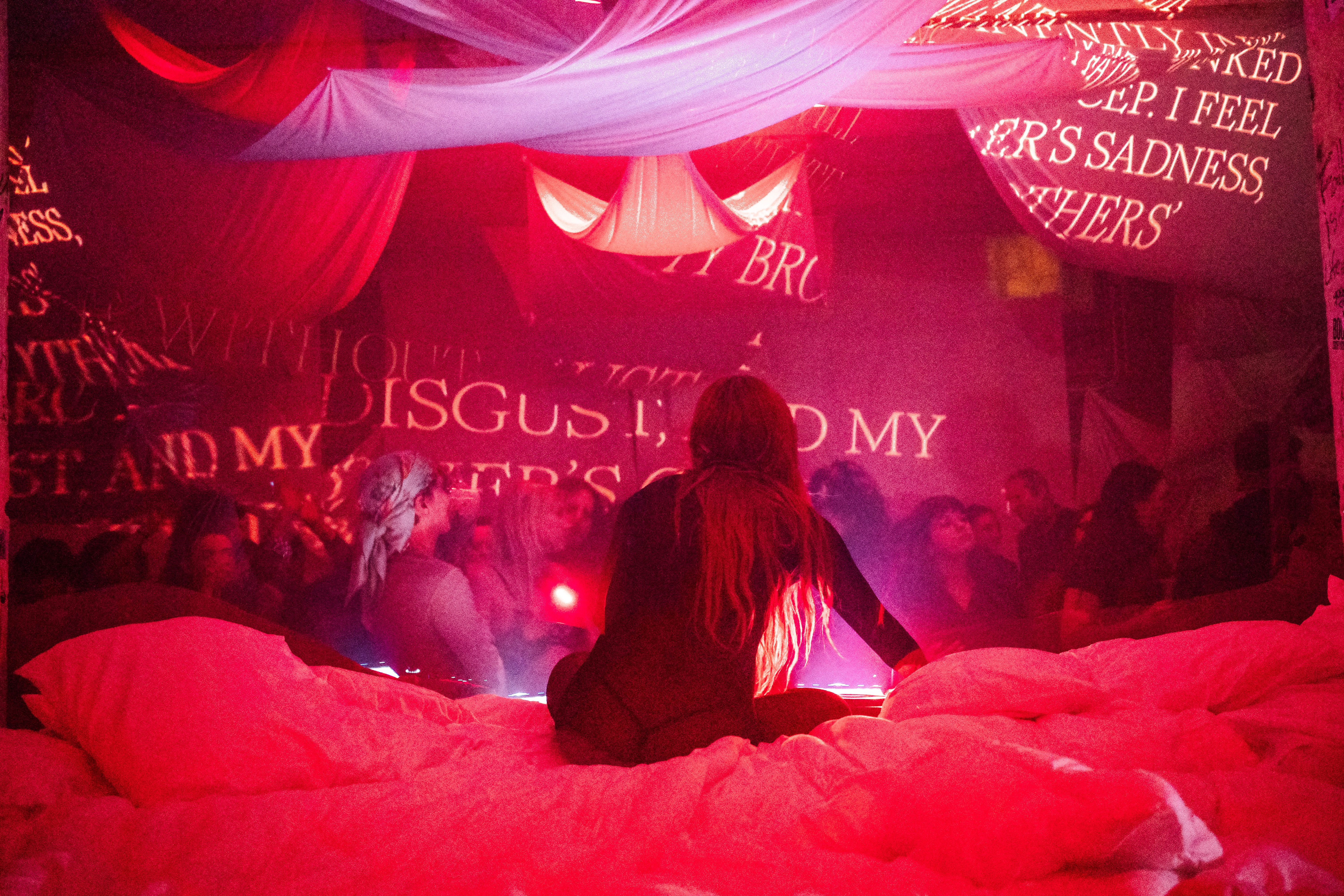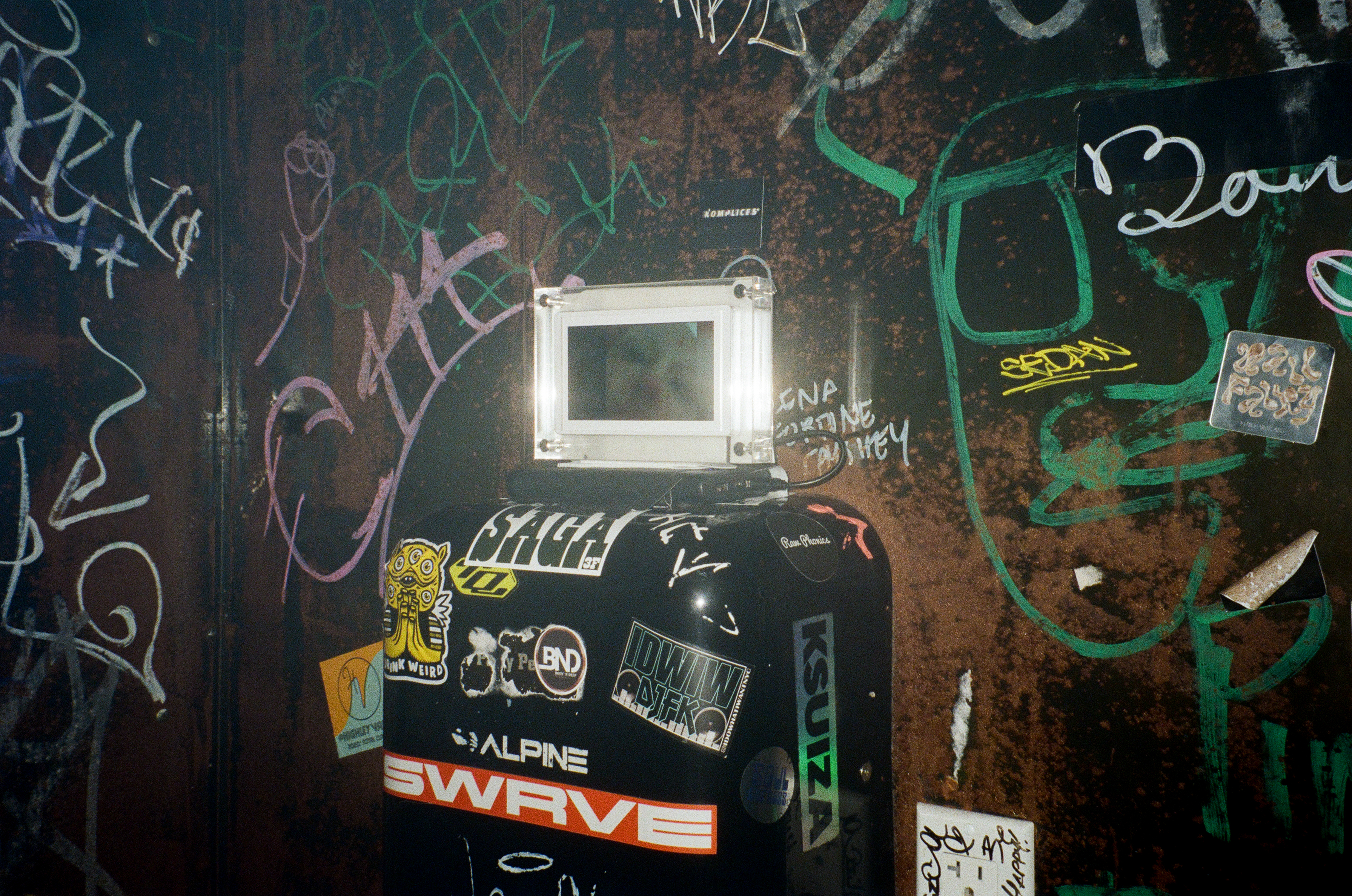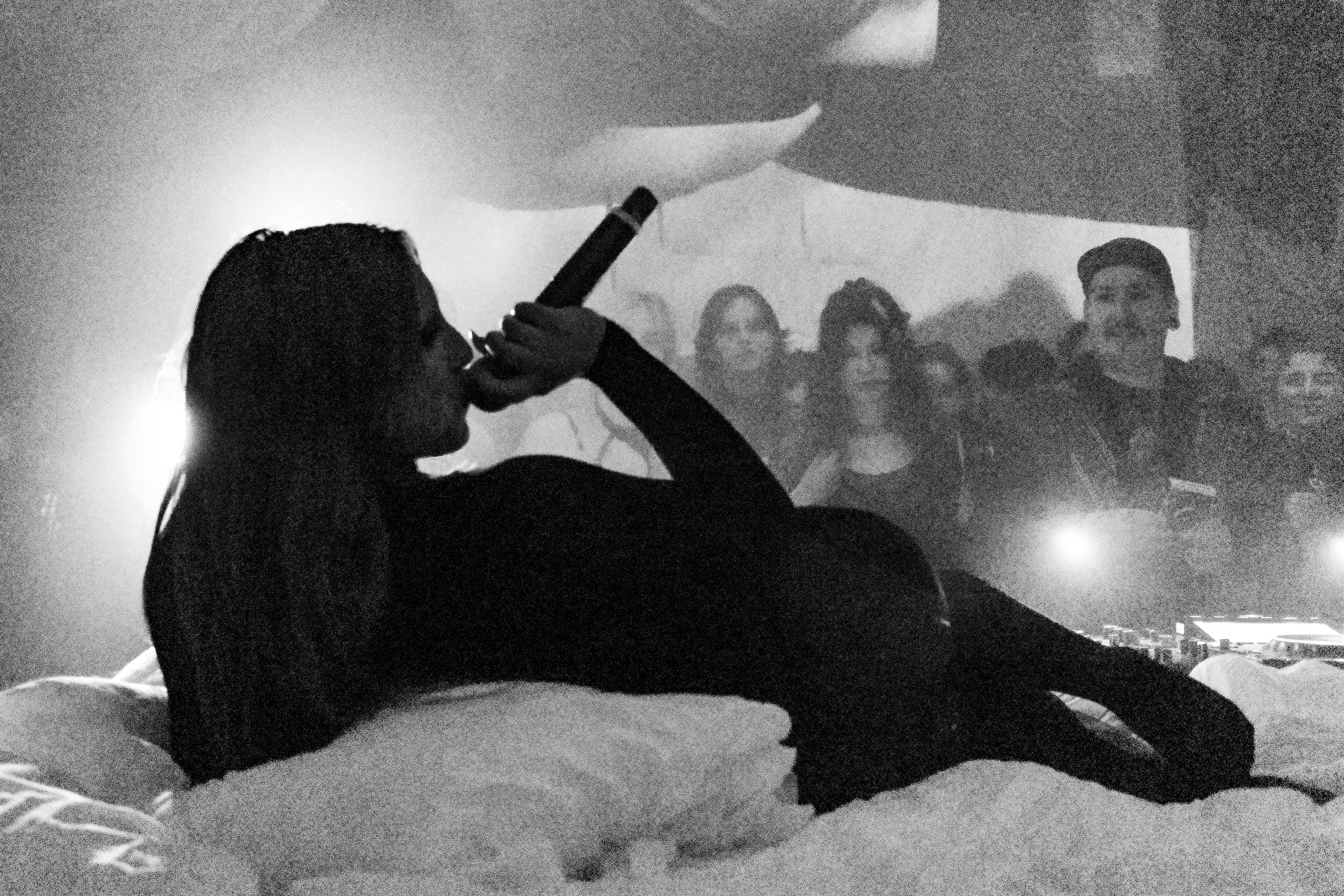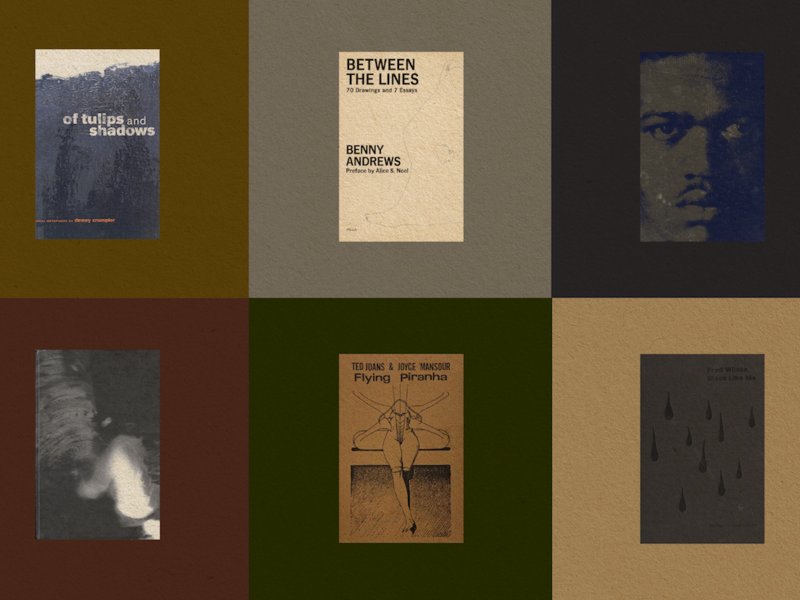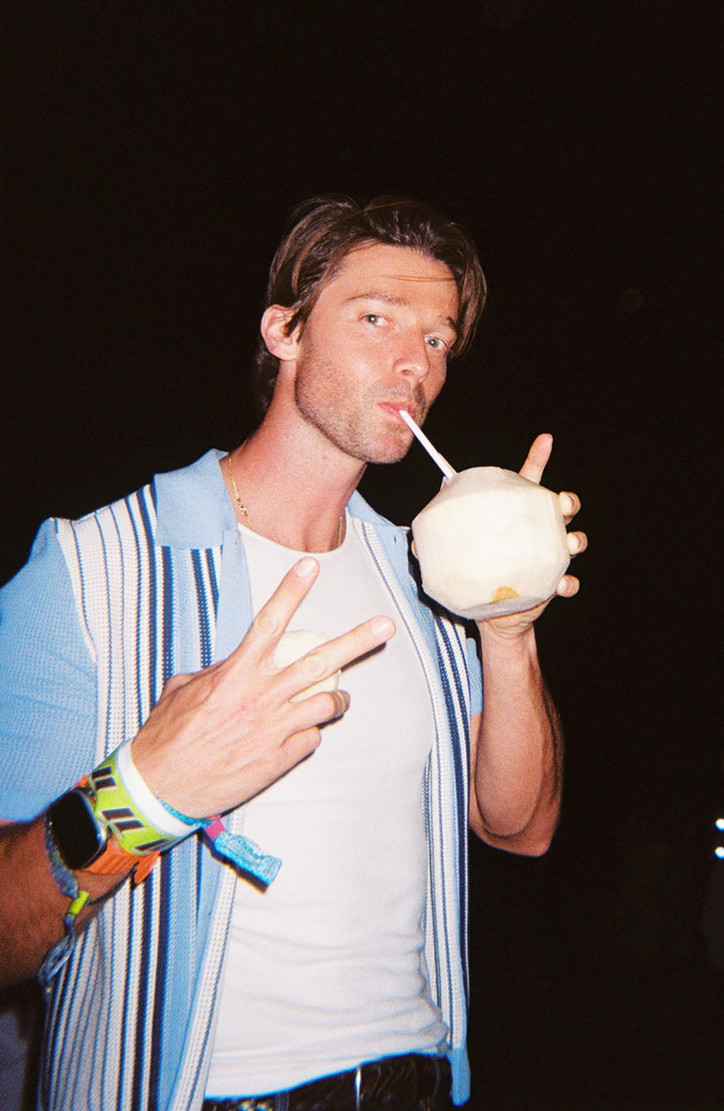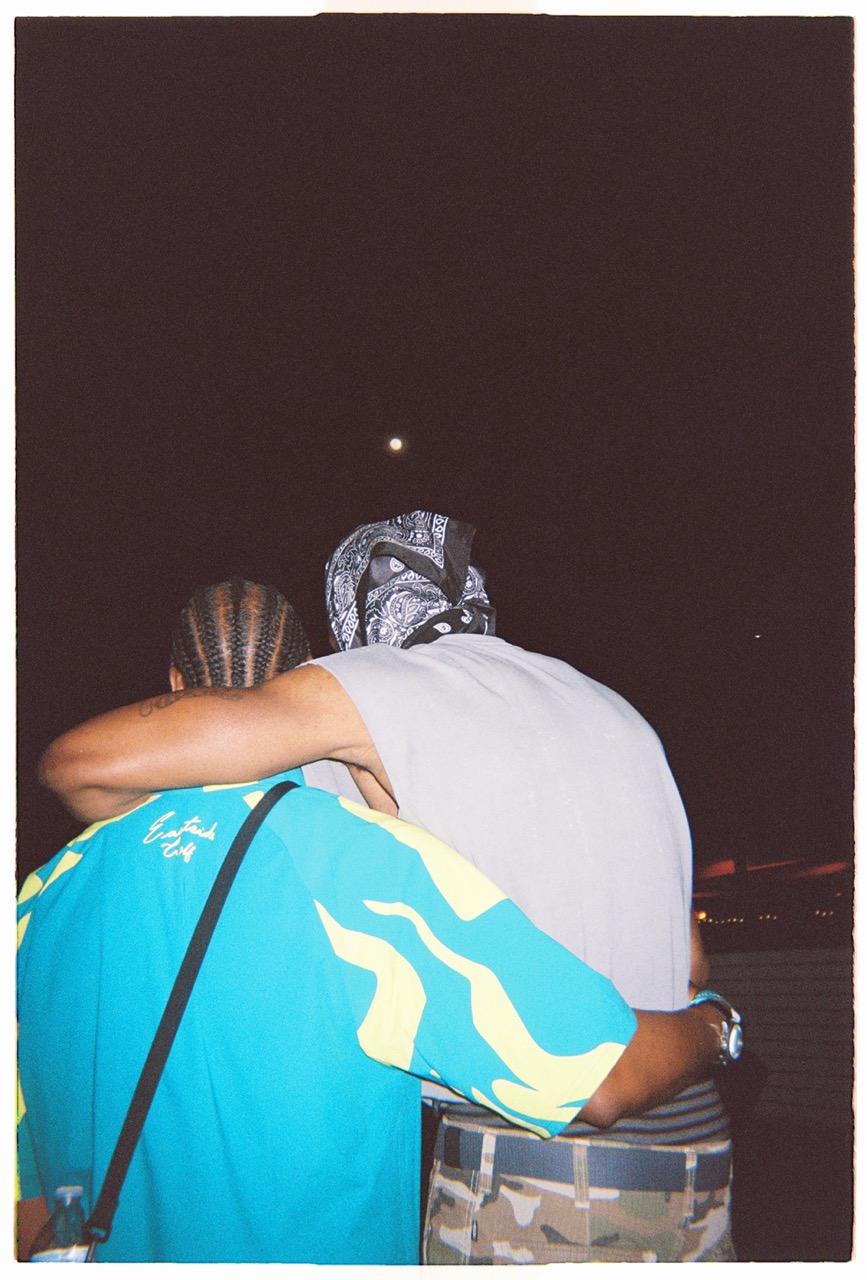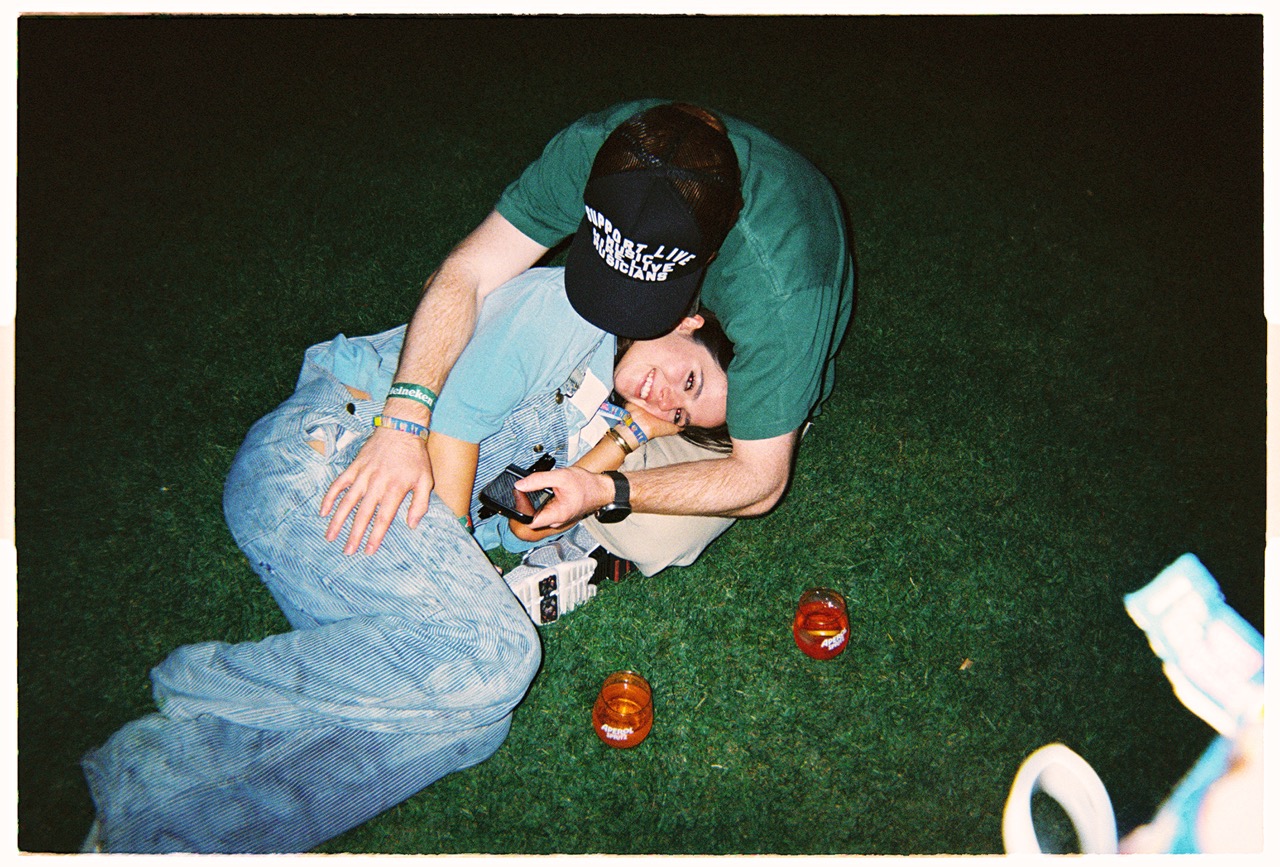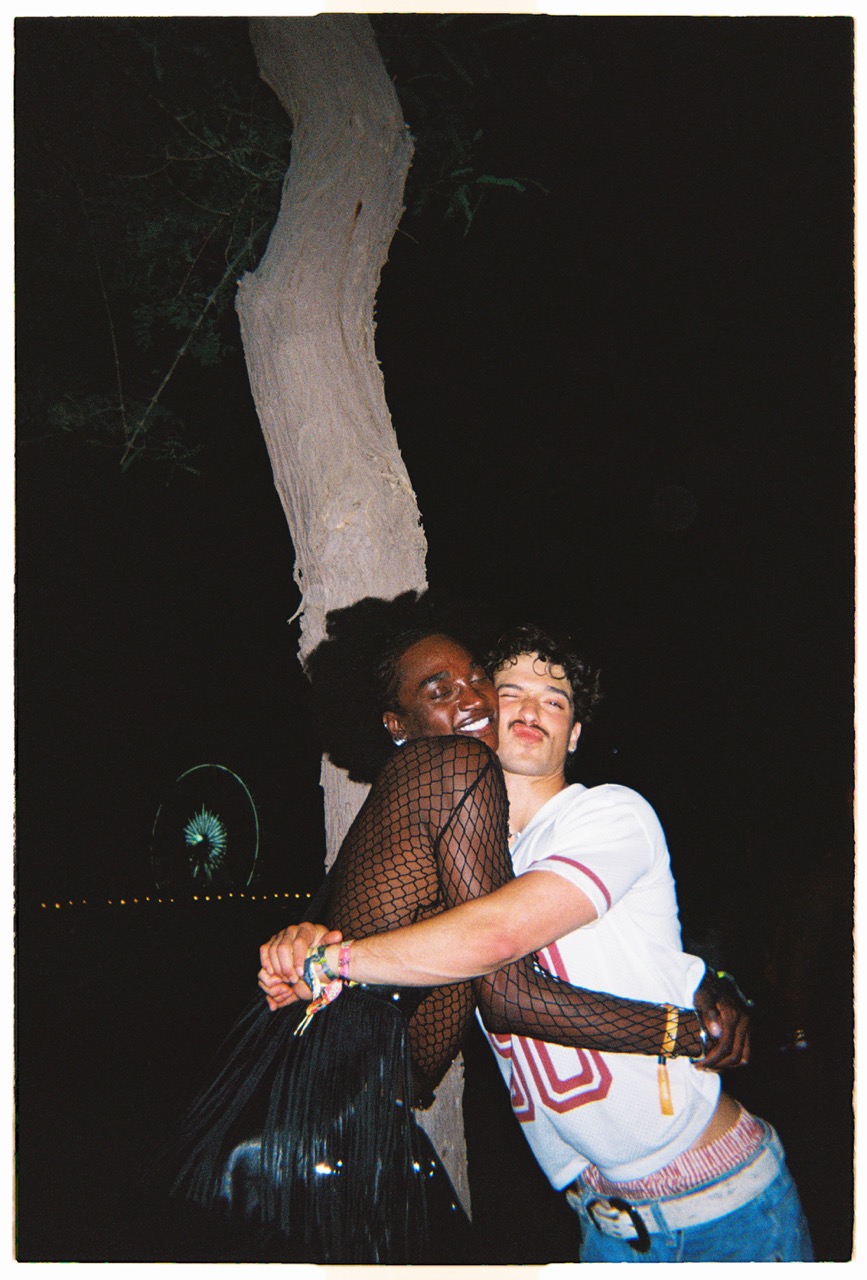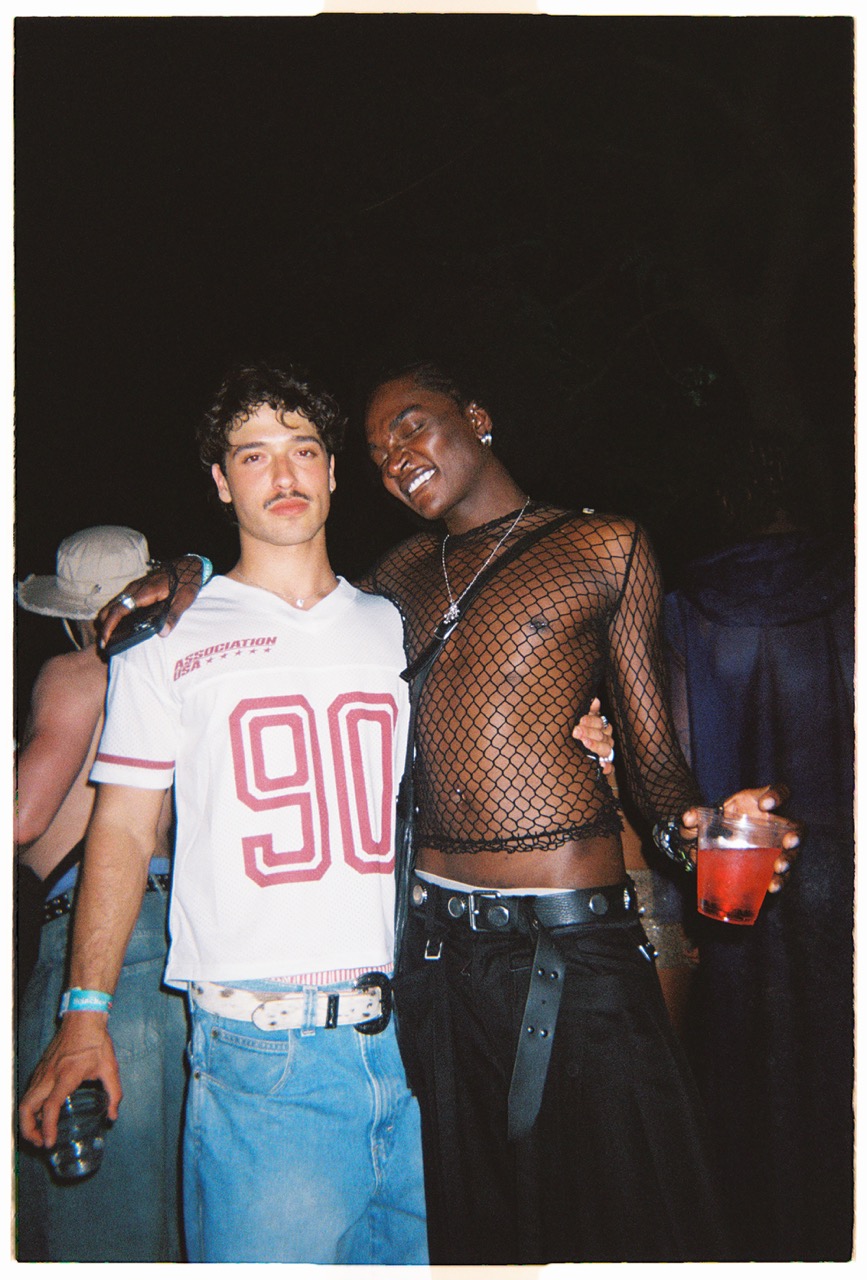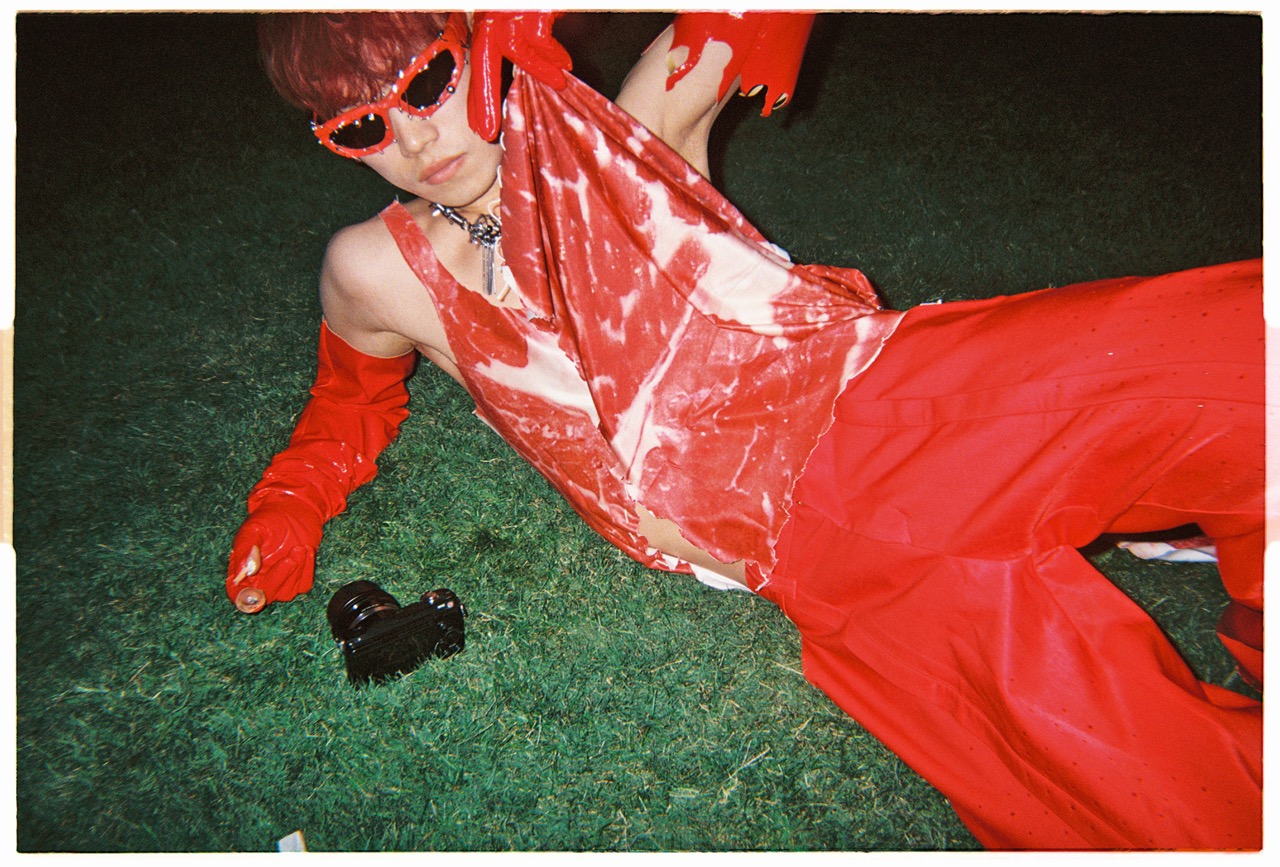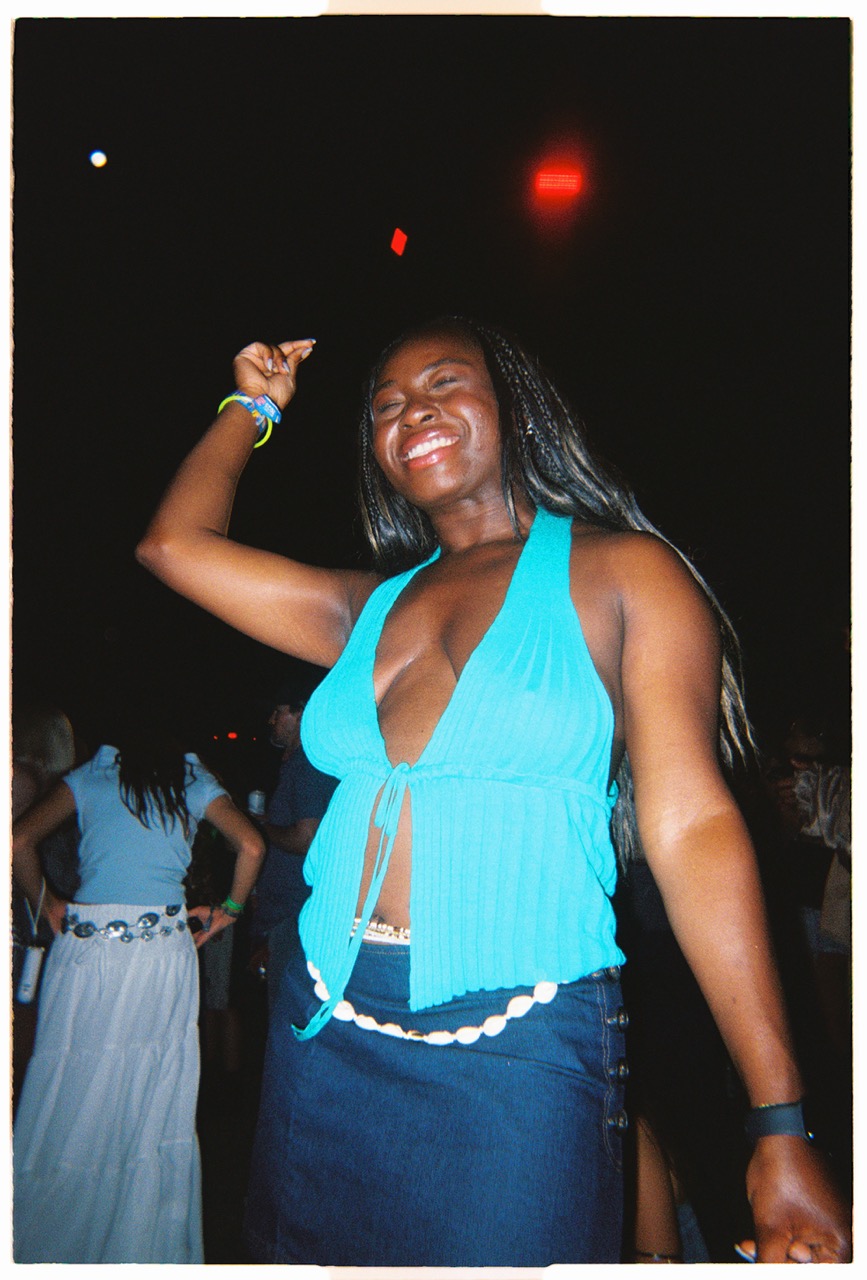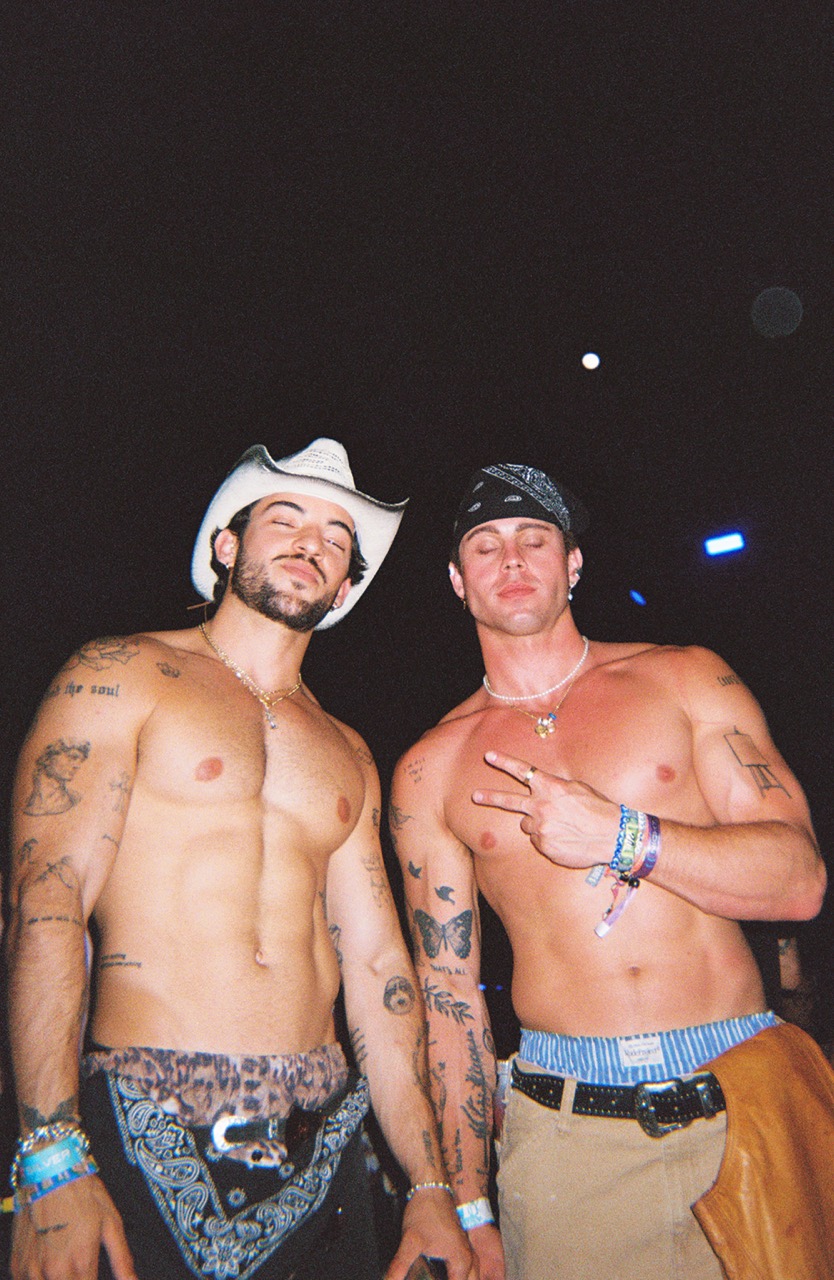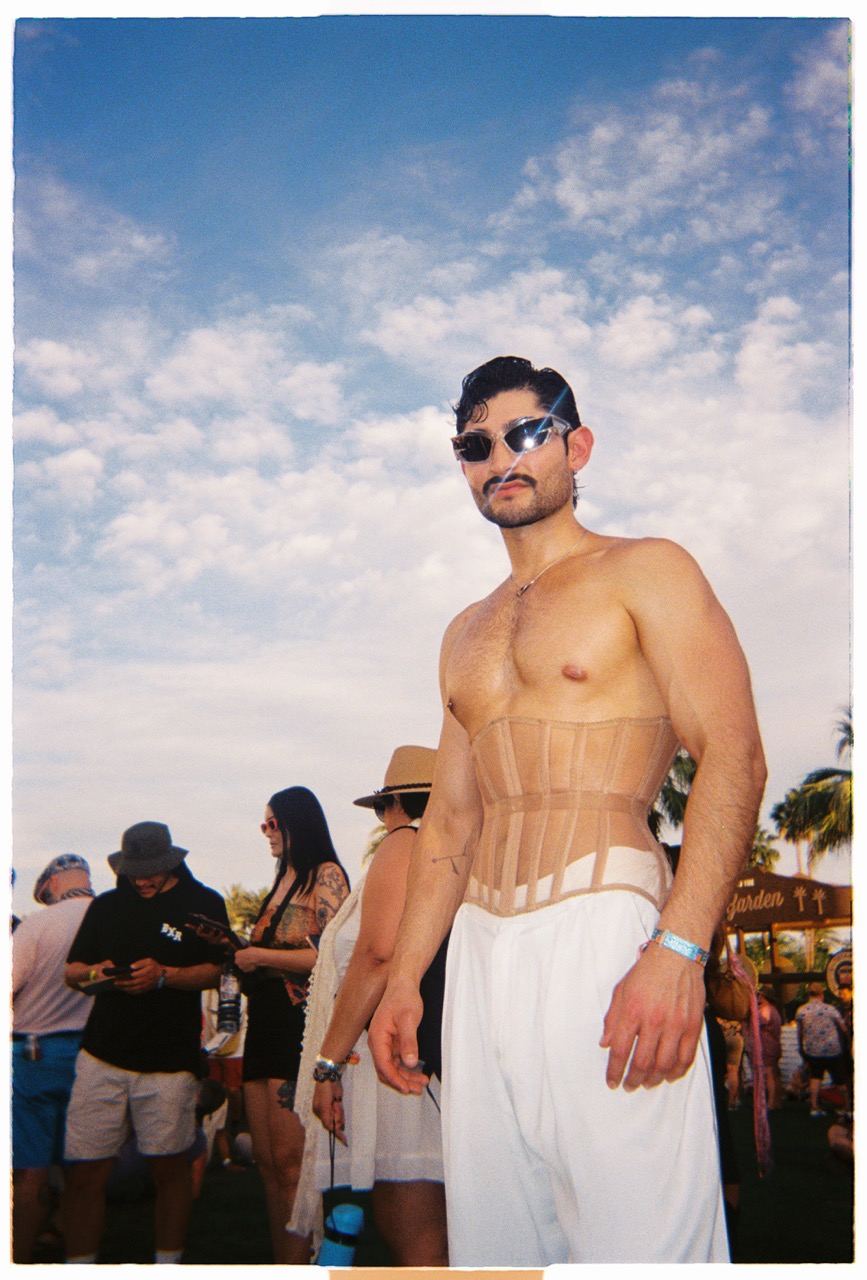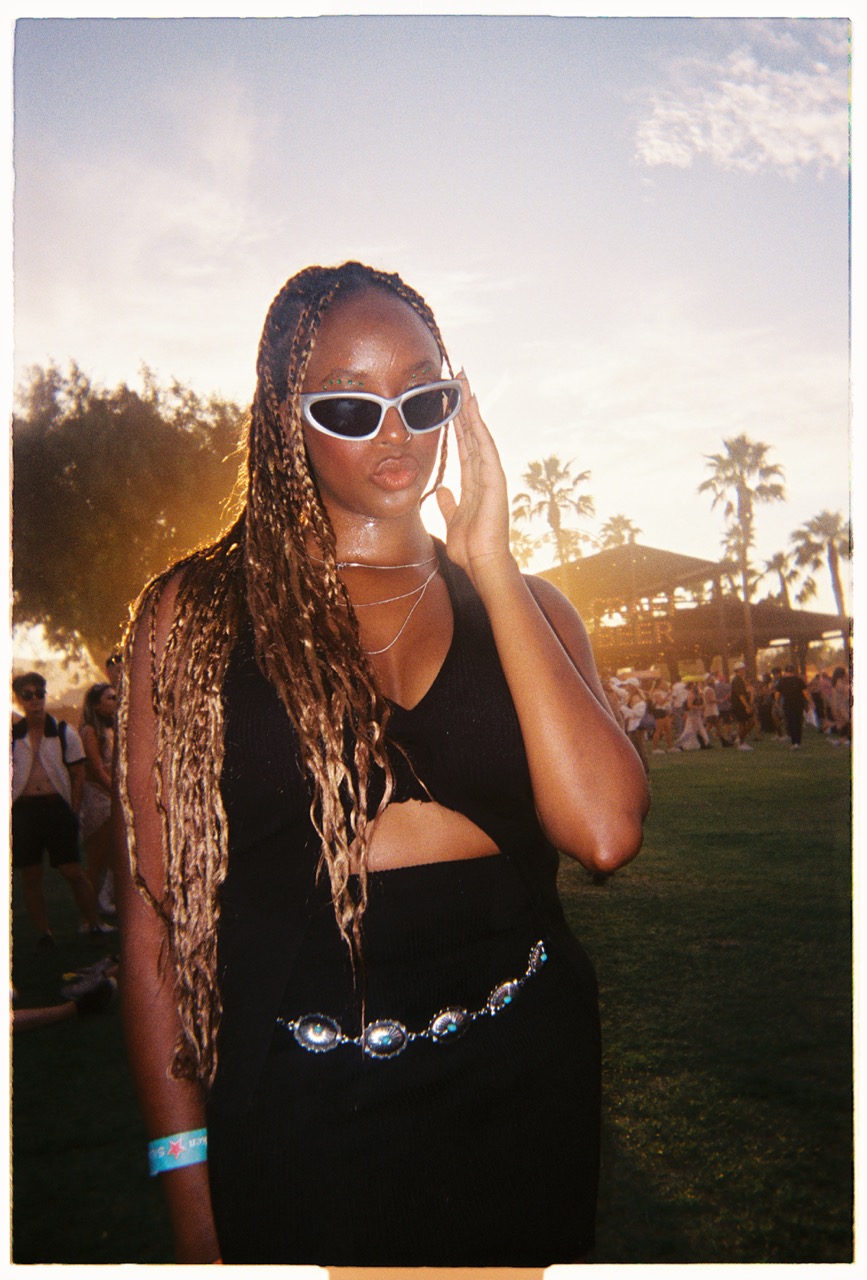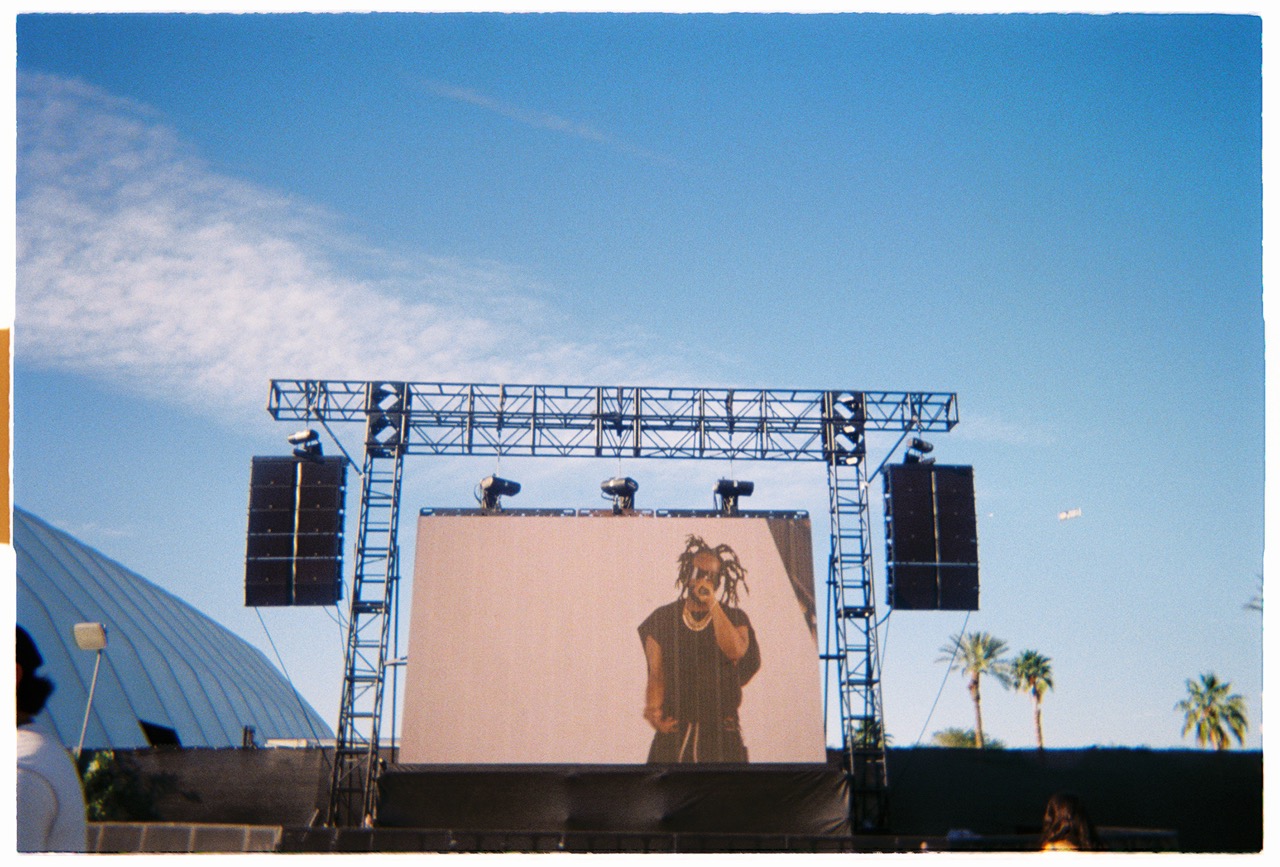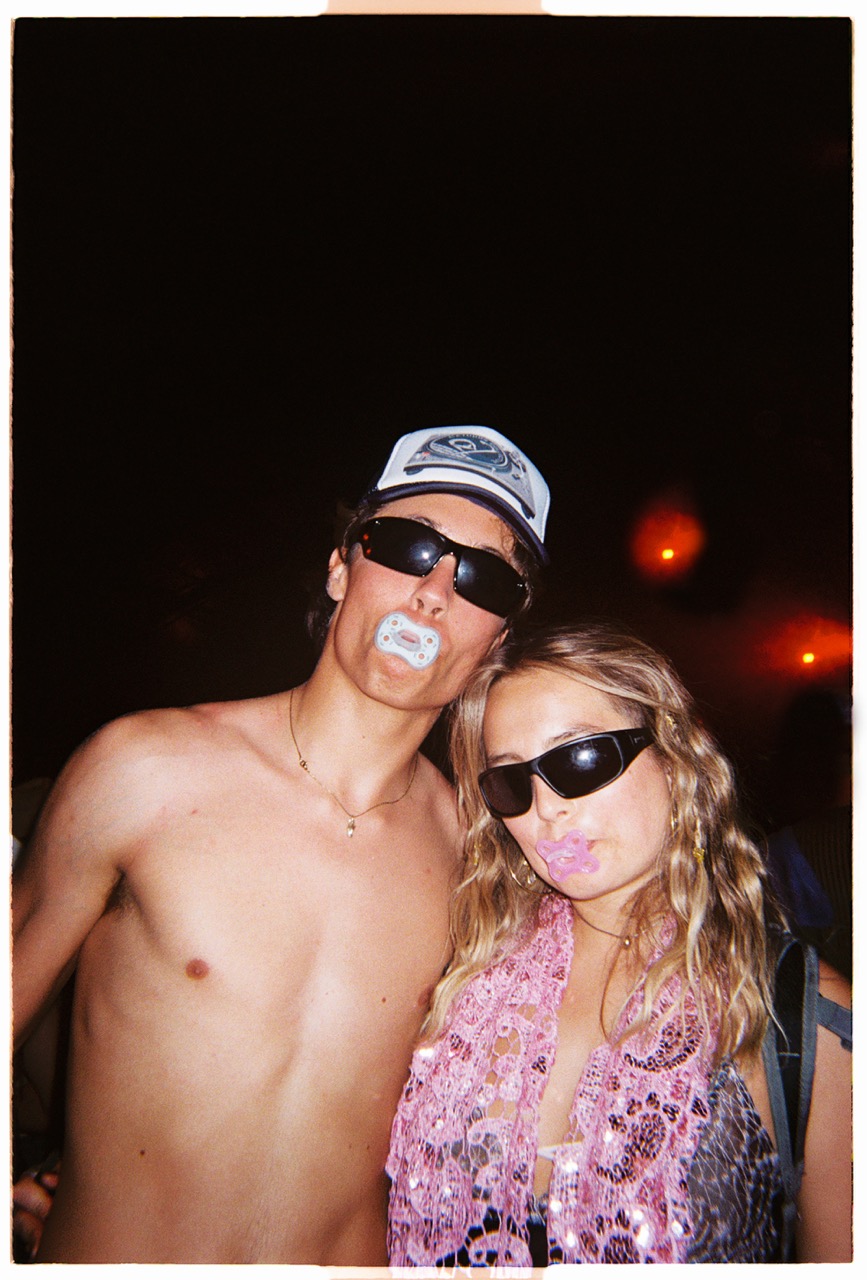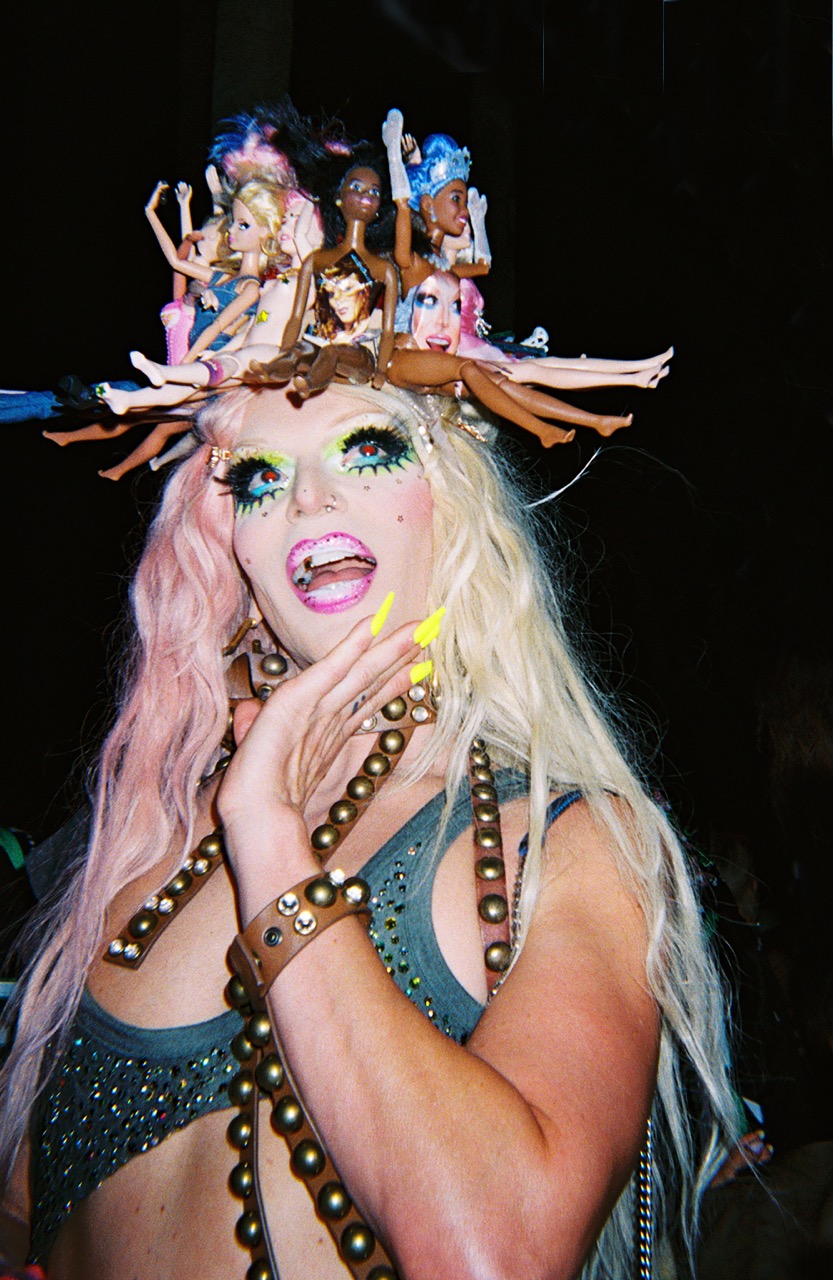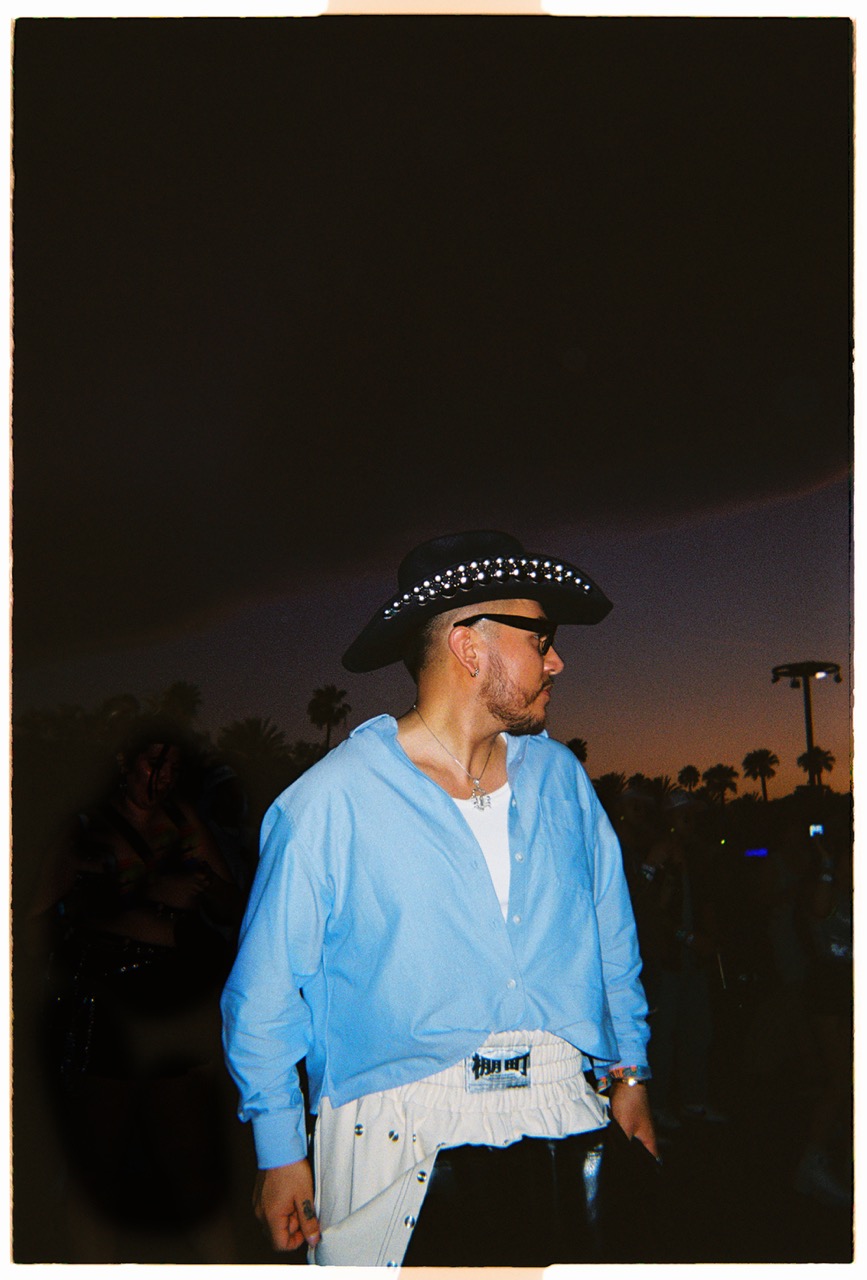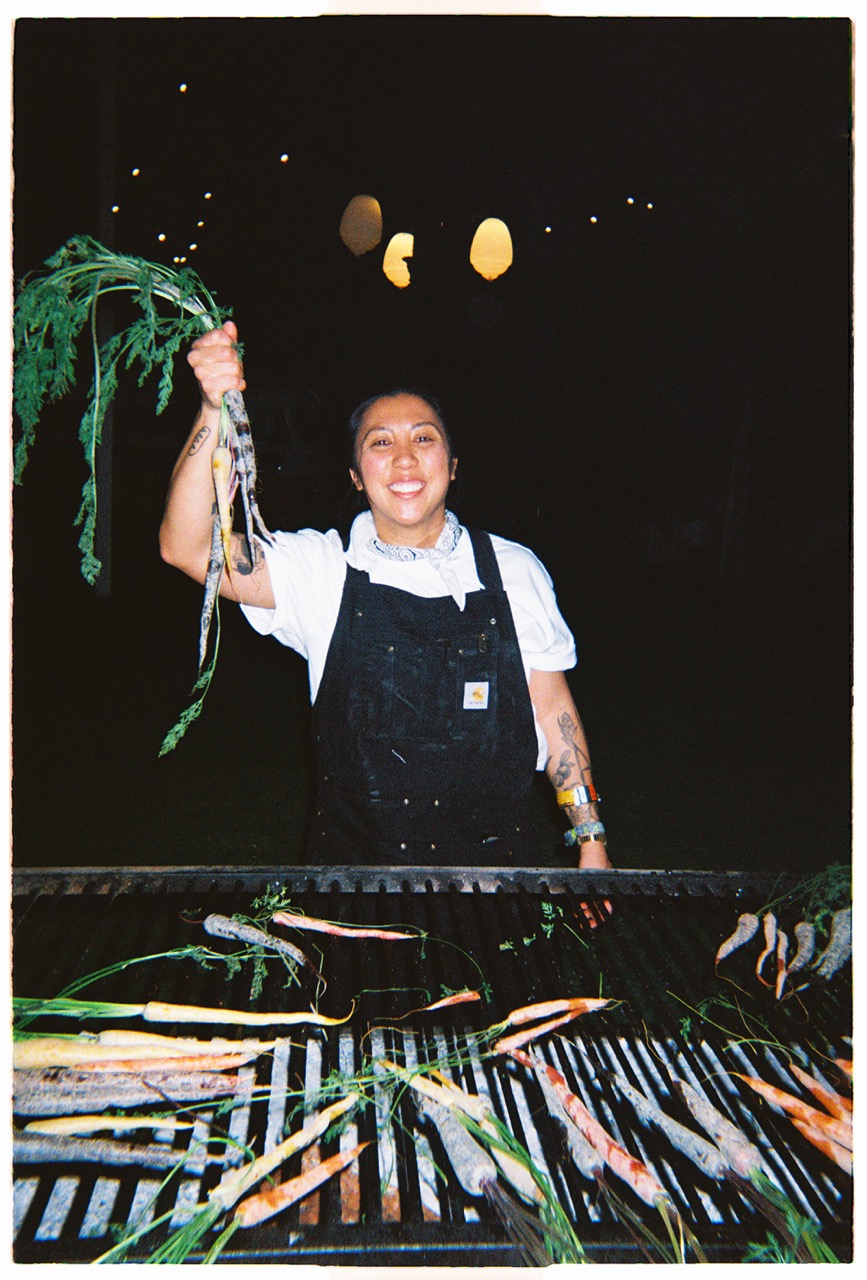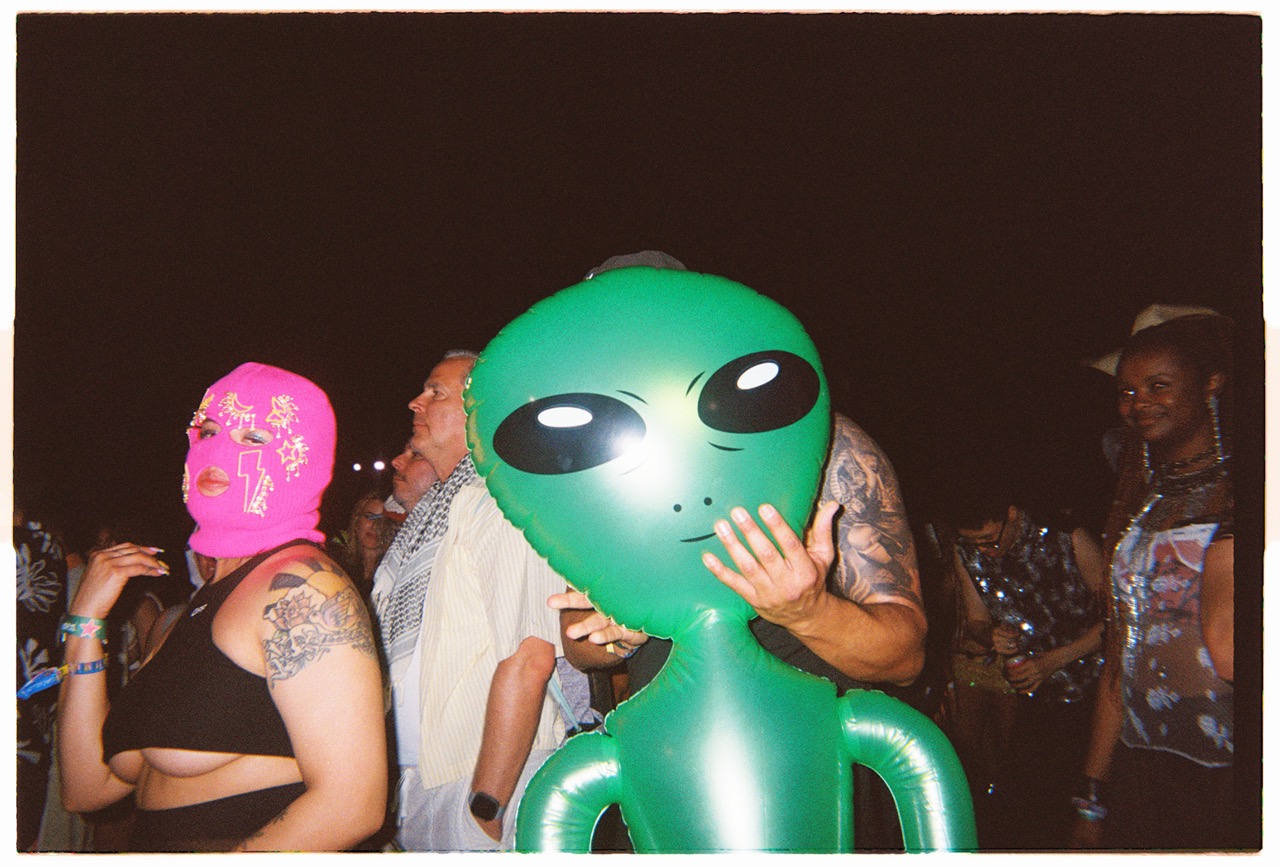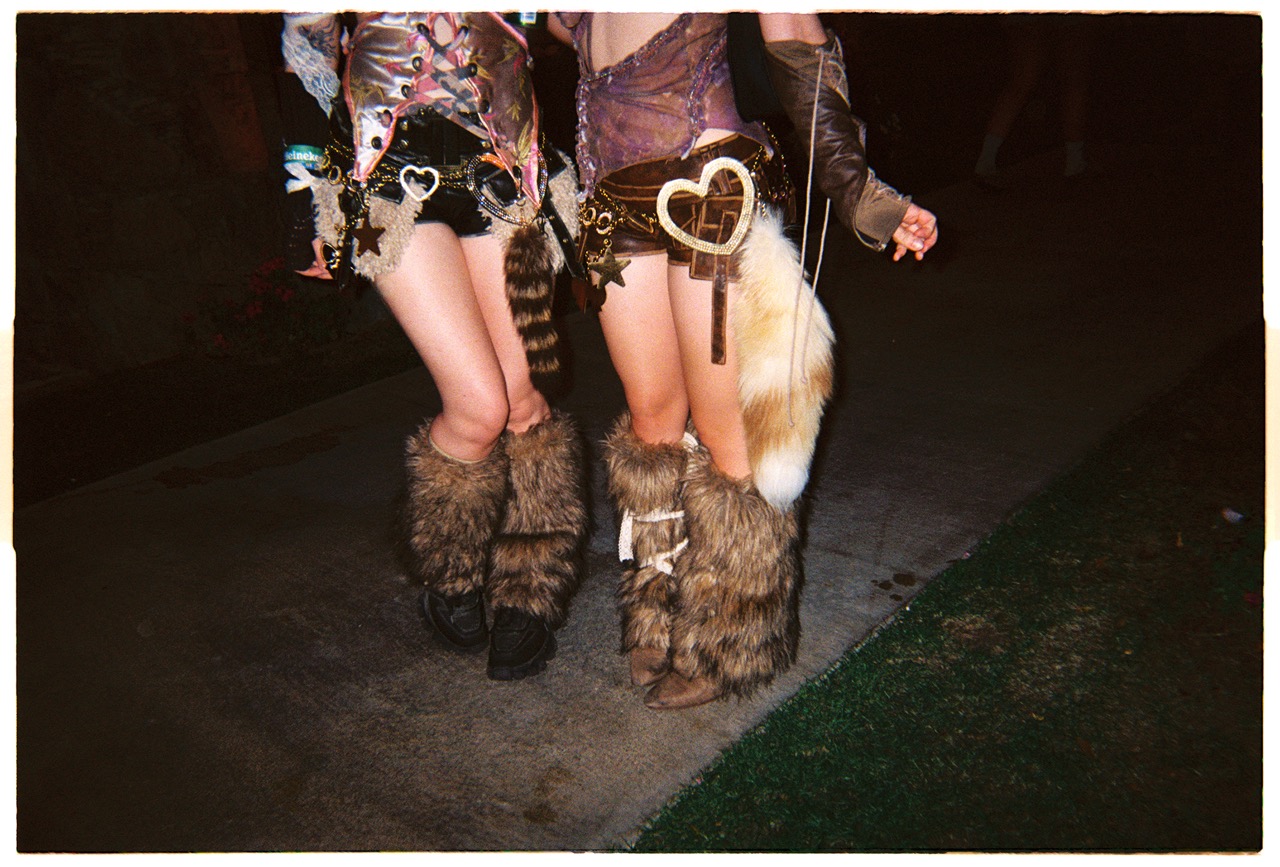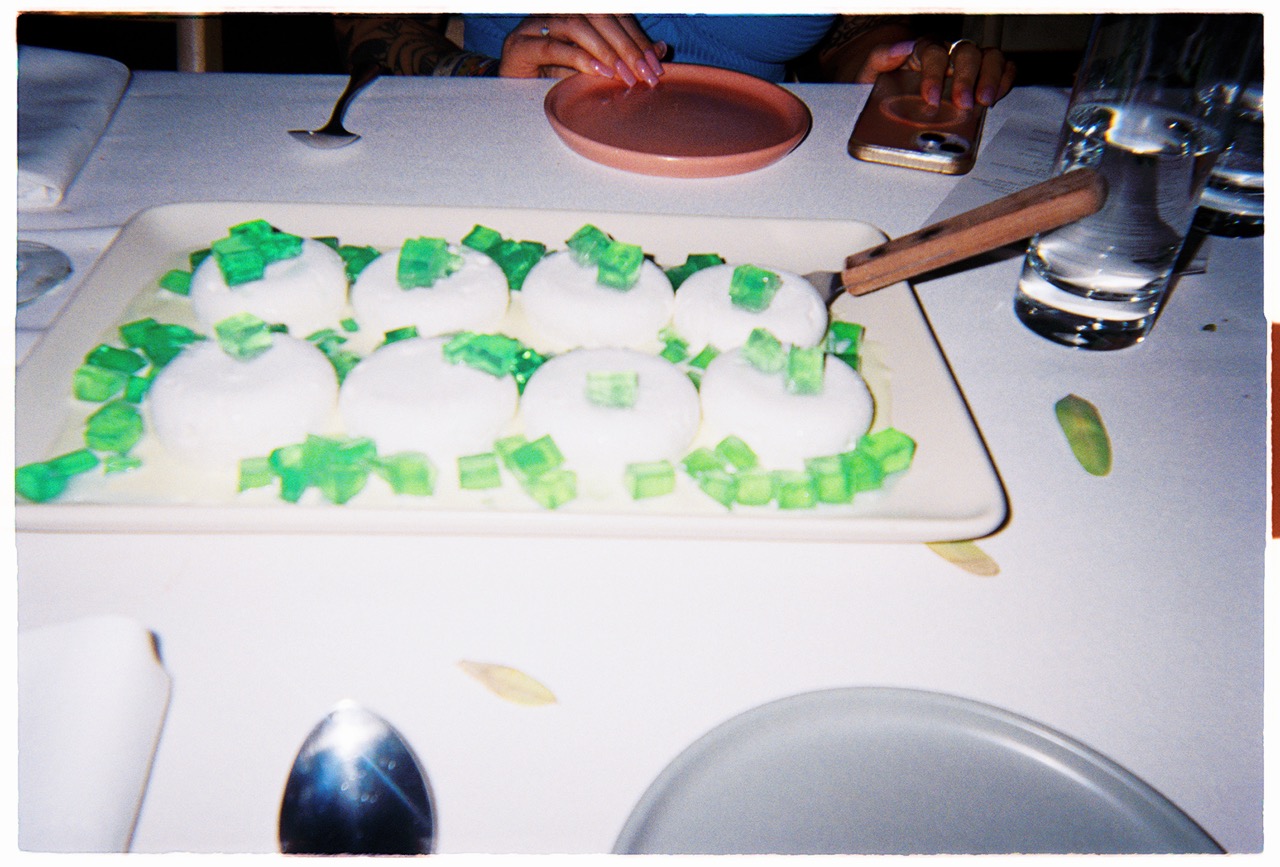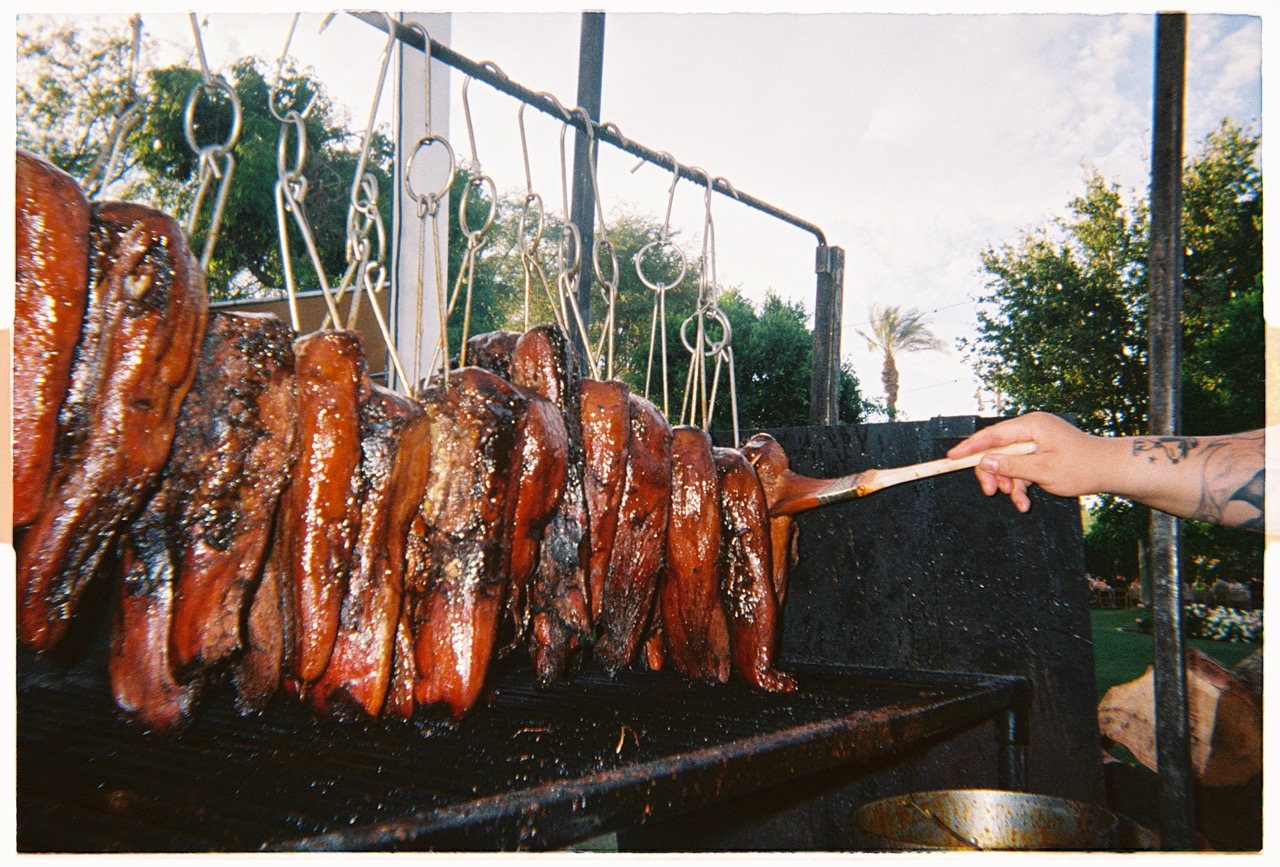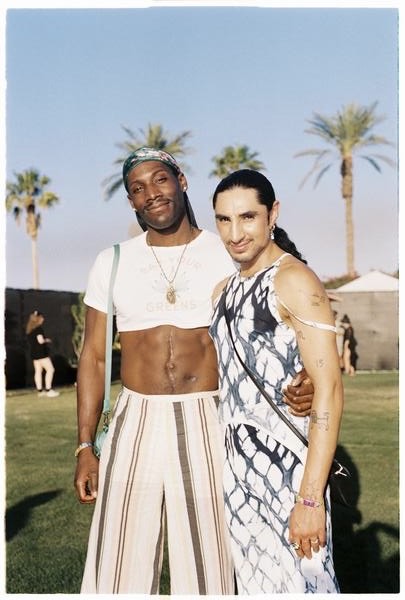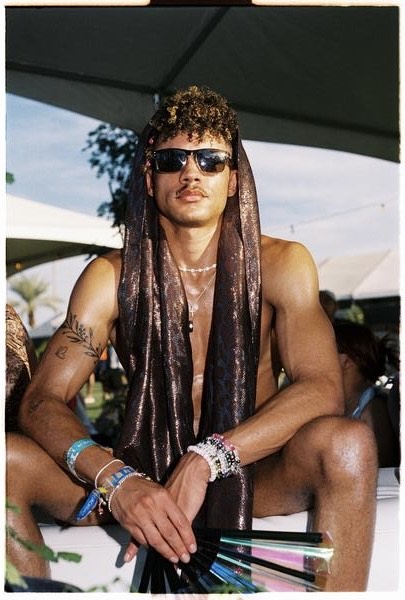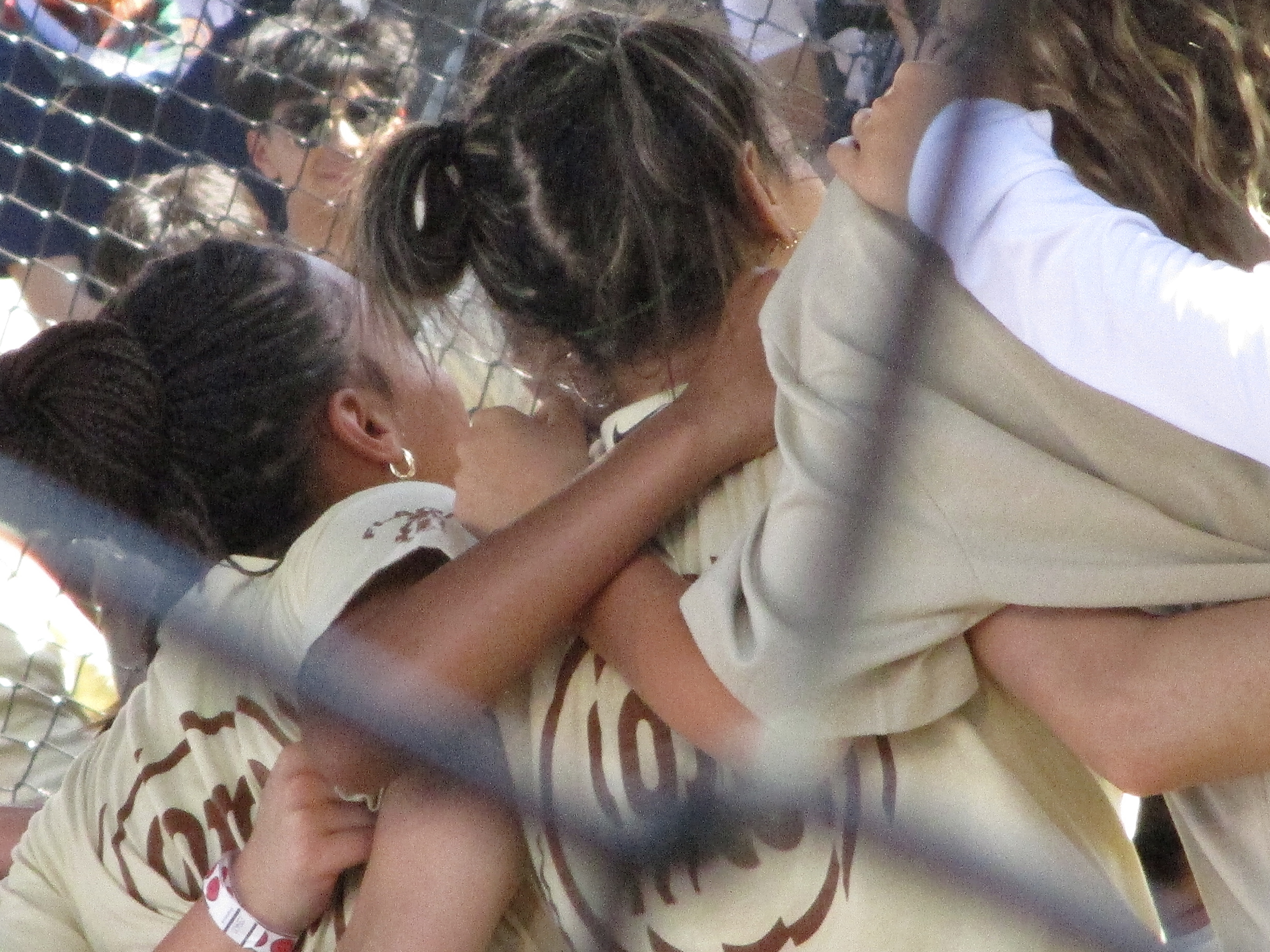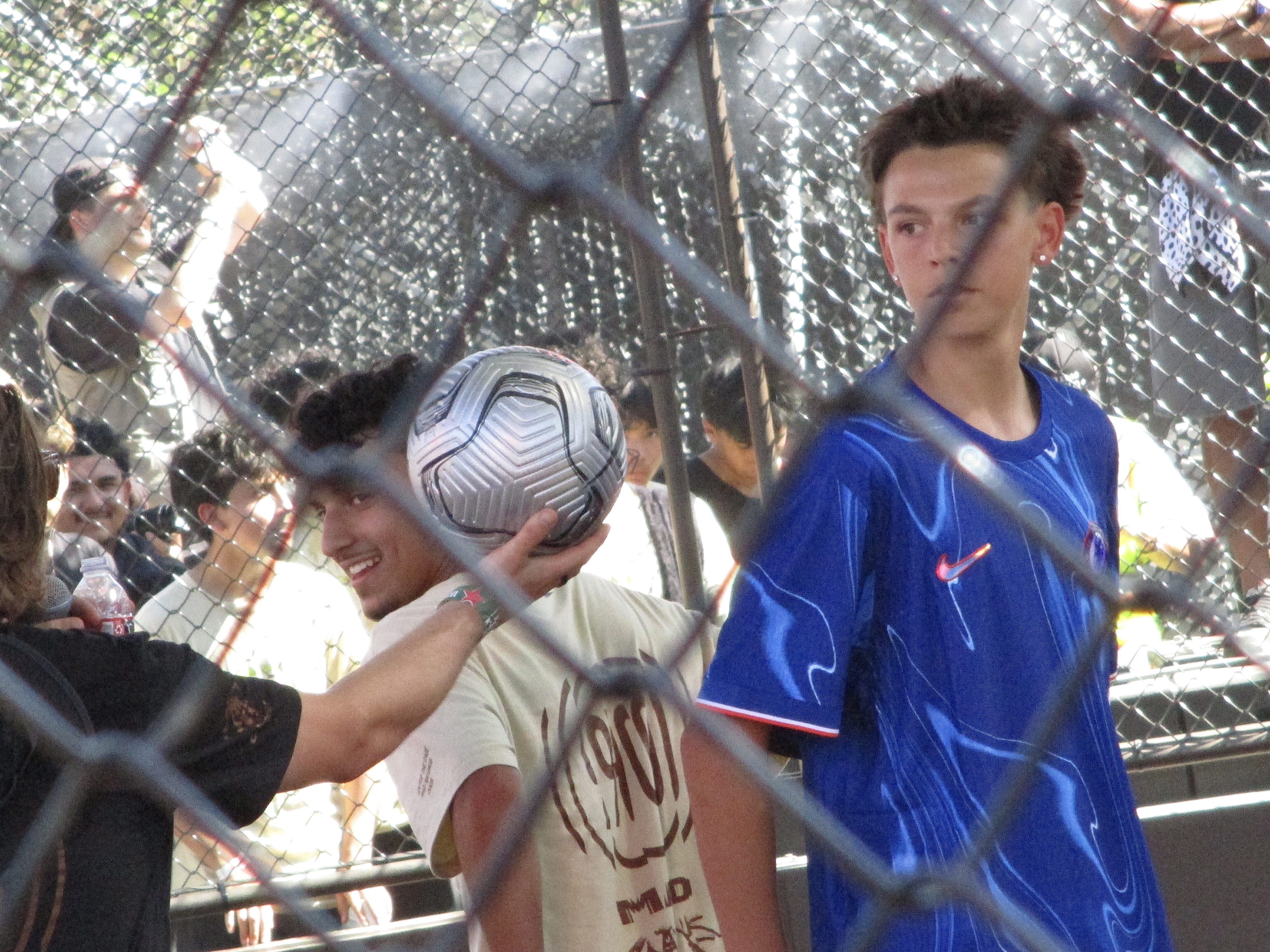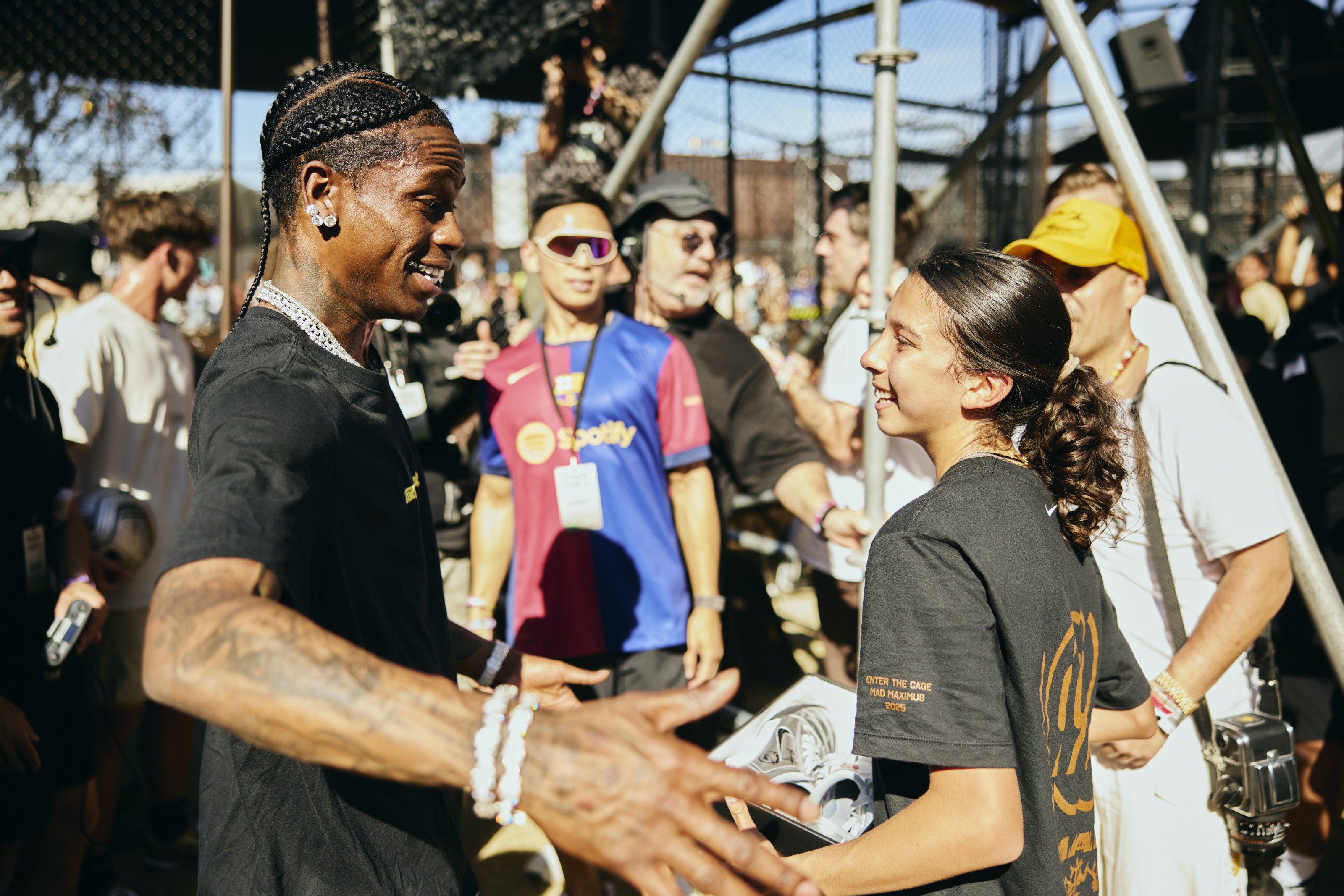Avenue A's Surreal Performance Cult
Now, decades later, Blacklips' legacy is cemented in Blacklips: Her Life and Her Many, Many Deaths, a book that archives its scripts, photographs, essays, and hand-drawn fliers. Alongside the release, ANOHNI has curated a companion album, Blacklips Bar: Androgyns and Deviants — Industrial Romance for Bruised and Battered Angels, 1992-1995, featuring downtown icons like Sissy Fitt, Kabuki Starshine, Divine, and ANOHNI's alter ego, Fiona Blue.
In light of these monumental releases, office spoke with ANOHNI and her collaborator Marti Wilkerson about hissing at death, staying connected, and bringing Blacklips' defiant legacy to a new generation.
What was it like sifting through the collective’s archives to put this together with Marti knowing that you initiated Blacklips all those years ago?
ANOHNI— It was a long process. It took about three years. Digitizing the videotapes of all the shows was a revelation. We had never seen many of the plays before. We saw some of the work as audience members instead of performers, which gave us much more insight into what we were doing up there. When you are on stage in someone’s play that you have only read through once, you are too busy thinking about your part in it to worry about the big picture. So it was humbling to look back and realize how little I actually understood about what had transpired.
The only other time Blacklips was unearthed to the public was in the exhibition at Participant Inc., 13 Ways to Die. What sparked the desire to create this book and music compilation?
ANOHNI— The archive is kind of vast, and we were hesitant to feed it to the internet in dribs and drabs. It was something quite personal for a lot of us. I think we collectively reached the stage where we were ready to address the work and the relationships we had as a group and let the wind carry it where it would go. Thirty years have passed since we started the group and 27 since it ended. Some participants are already long gone. So I think this was something that felt timely. The book and exhibit were a chance for the group to come back together, enjoy each other's company, and reflect on what we did together when we were younger.
Marti— Blacklips had always been obscure. The plays took place on Monday nights and didn't start until 1 or 2 o'clock in the morning. As more of the members kept dying, we realized that authoring the book ourselves was the way to go, using our first-person accounts and primary source materials.
Was this the first time you both did a huge sweep of everyone’s records of that period in your lives? Or is it something you often did, so the project just made sense?
ANOHNI— It was really the first time.
Marti— There were many photographers in the group, and we had intimate access to each other. From 35mm negatives to 16mm and super 8 footage to the newly digitized videotapes, we gathered all our stuff together and started to scan, browse capture, and edit. We used that to create a flurry of color-saturated pages with script blurbs and sections of silent black-and-white analog imagery to rest the eye, with a smattering of ephemera here and there to add context.
Where is everyone now? How connected have you all stayed?
ANOHNI— We remain a loosely knit group of people and are all in touch, which is kind of miraculous. Certain people like Clark Render, Hattie Hathaway, Chloe Dzubilo, Lulu, Art L’Hommedieu, Page, Howie Pyro, Shecky, Wendy Wild, Jake, and others have joined the Blacklips “Away Team”. But the majority of us are still dragging our hearts around.
Marti— A lot of us are still here in New York. Some of us are in California, some in Berlin, and some are always on the move. We will always be connected, this was a creatively formative time in our lives. It was a time of experimentation and stretching our wings. There was such a commitment, and the bonding still resonates.
Every aspect of the Monday night performance was created by the collective — from the set to the plays, to the fliers, to the energy that surrounded that night of the week — was this similar? Did everyone play a part?
Marti— In terms of the book itself, the content is a merge of all our archives. We also drew from a series of interviews and original essays from the members of the group. Most of the scripts are presented in our own handwriting, next to collages, paintings, and drawings we all made. You can truly say the collective is the author of the book. Each person added a texture. Johanna Constantine has an Art Brut style when scrawling with a crayon or greasepaint, Kabuki Starshine has a fine line, which is Erte-like. Ebony Jet was into cartooning, Art L'Hommedieu illustrated an entire Tarot deck based on the members of the group. People wrote poems and lyrics and made posters, flyers, and press releases. We tried to pull in everything we could while keeping an elegant, chronological design.
What is the significance of the title? Is it in reference to loved ones that passed? Or does death mean something else?
ANOHNI— It is a reference to the fact that at Blacklips, we specialized in death scenes for a number of reasons. We often said that the stage would most likely be filled with “dead" bodies by the end of a play on any given week. We did a lot of gore and forged many dramatic deaths. For me, Blacklips was always hissing at death and "camping on the graves of the dead." At the time, it was the AIDS crisis in NYC.
Marti— I think besides the death reference, the title also captures a feeling of the possibility of many, many outcomes.
I can only imagine how emotional a project like this could be.
ANOHNI— It was touching to really absorb some of the plays written by other members of the group. James F. Murphy’s plays really surprised me with their surreal wit. Clark Render's plays are just so funny. The archive is kind of engrossing; it almost feels like cracking open a tomb, and all the spirits fly out and come back to life.
Marti— When you see the book, especially the video stills, everyone living and dead, is there in the same space. I did a lot of scanning of these tiny fragile Polaroid collages made by Lulu, one of the dead members. I felt very honored to handle them carefully and replace them back in the little albums afterward, just as she had arranged them.
What was your favorite play to perform or watch?
ANOHNI— My favorite moment is the “Maggot Ballet” from a play I wrote called “Starvation." In the scene, Psychotic Eve performs as a "Human-Sized Maggot” with two assistants, “Shit Pip” and “Chicky Wang.” They perform a tippytoe dance number, leaping graciously around on the stage while tossing “alcoholic livers” into the audience. Eve then lays hundred of maggot eggs while James F. Murphy sings their praises.
Marti— I have a soft spot for our version of "Frankenstein." People loved portraying these iconic characters, and everybody really ran with it. Right down to the lighting person, who created an "apocalyptic storm" on the Pyramid stage while cranking the smoke machine in concert with an old "hurricane wind" sound effects record. To the instinctive impulses of Howie Pyro and Kabuki Starshine as the monster and the bride. The audience gasped and screamed when they came alive and cried when they died.
Is the version of “Rapture,” as Fiona Blue, in the compilation from the first performance at The Pyramid?
ANOHNI— Yes, it is a version I recorded for performances at Pyramid and Jackie 60 in 1992. I used to perform with a backing tape.
How long did it take to put the compilation together?
ANOHNI— About a year. The compilation is a mixture of tracks we enjoyed listening to in DJ sets before and after the shows, some archival recordings, and finally, some new recordings that I produced of favorites that members used to perform. Sissy Fitt singing “Sister Morphine,” Ebony Jet singing “Satellite of Love,” and James F. Murphy’s “Satan’s ‘Lil’ Lamb” were all rerecorded in 2022. I digitized many of my audio and video archives over the last few years, giving me more access to things that had been buried. Johanna Constantine advised on some of the DJ track material. I designed the artwork using drawings and materials I made during that era.
How does it feel knowing that people may find this book, listen to the compilation, learn of Blacklips for the first time, and feel validated in their identity?
ANOHNI— To me, making this work was kind of a survival strategy as much as anything else. It was a response to a world where most of us felt like there was no obvious way forward. We weren't searching for stardom or escape from that scene, really. We were really doing it for ourselves and for each other. The audience was vicarious onlookers for the most part. It was such a different time, long before the internet. People may recognize some quality of anarchic creativity, and I hope the book will encourage those people to hike up their skirts and get busy. Get their feet muddy. Not everything should require monetization in order to seem worthwhile. Some of the most meaningful things I was ever a part of happened in barren rooms late at night with very few people listening and even fewer people paying, and the fact that it was so secret made it special.
A lot of the tech now is designed to reduce everything to a potentially monetizable gesture, which insidiously strips us of our ability to protest that platform or the terms of engagement upon it. It's just very hard to break free now for all of us. They have really tightened the noose in the last 25 years. I would never have thought that I might consider the early nineties to have been a simpler and more innocent time because they were harrowing in many respects, with people dropping dead of AIDS and drugs and the Gulf War just beginning for the first time. But the internet has poisoned everyone, and it's more difficult than ever to figure out how to live now or how to be free within oneself and within community.
Marti— We have already experienced this a bit during the Participant, Inc. show. New people coming up to us and feeling a kindred spirit. One of the Blacklips pronouncements by our host, Dr./Mrs. Clark Render was: "Reject the outside world. Welcome to Blacklips, Episode 9.”
